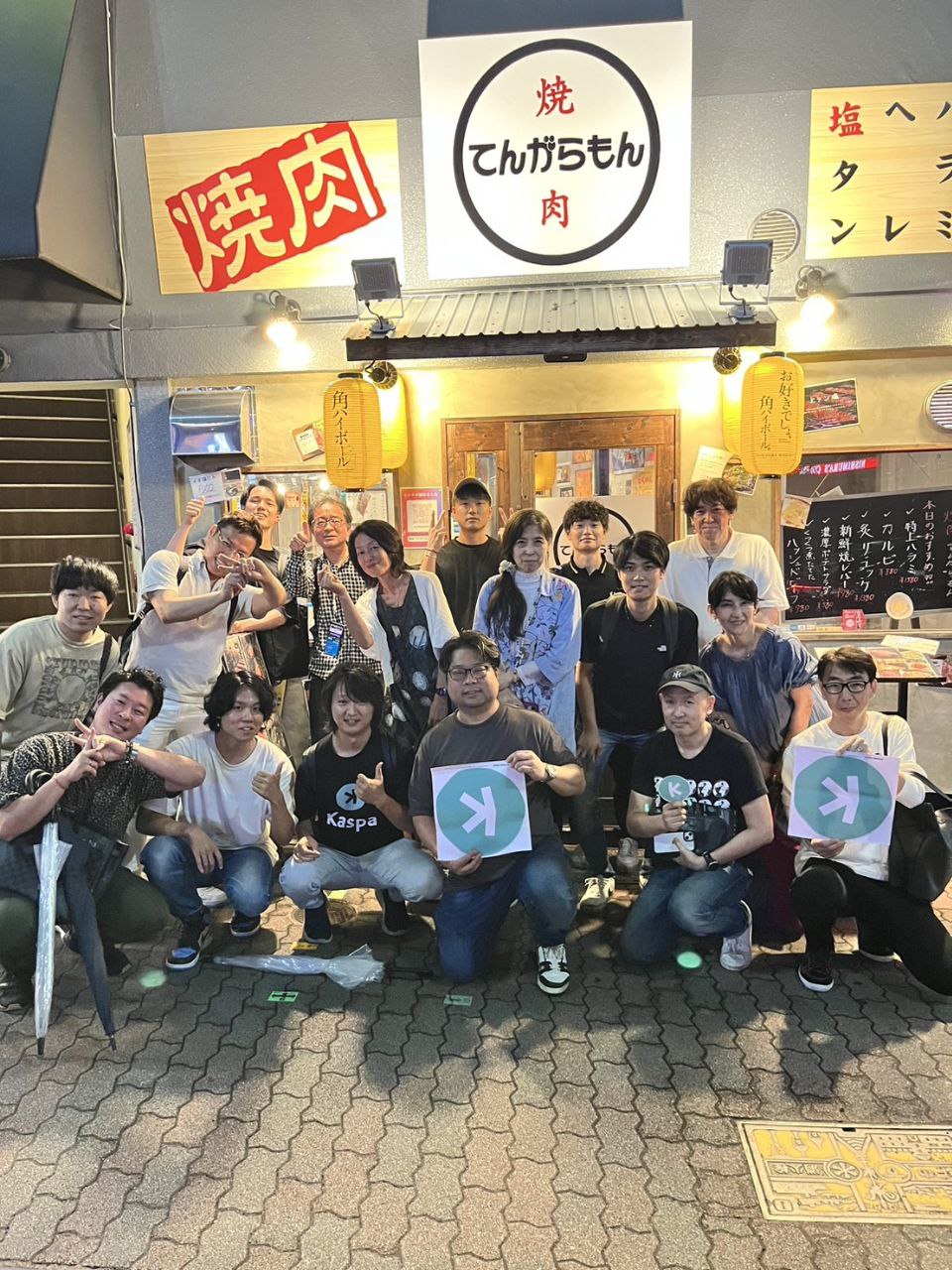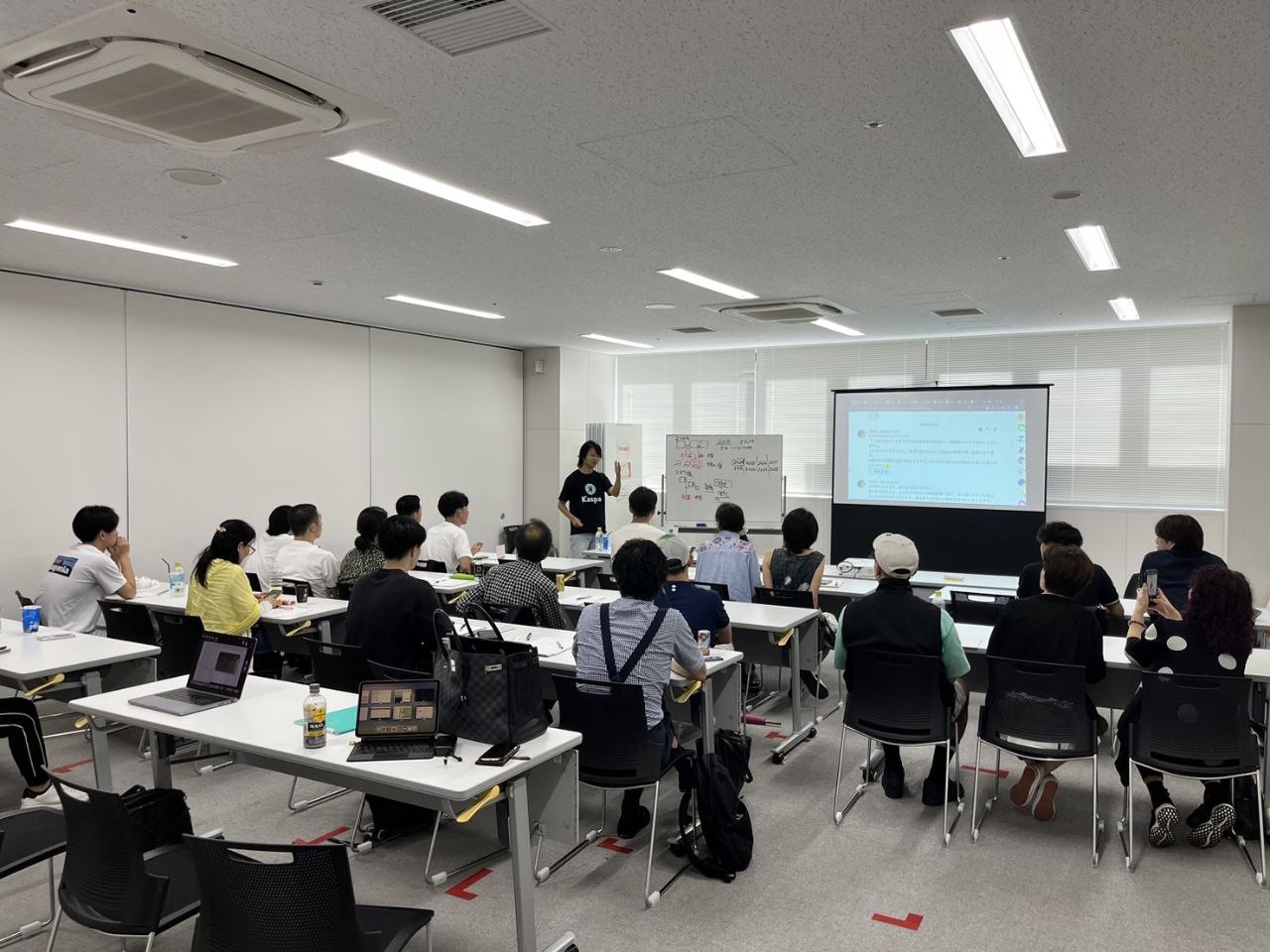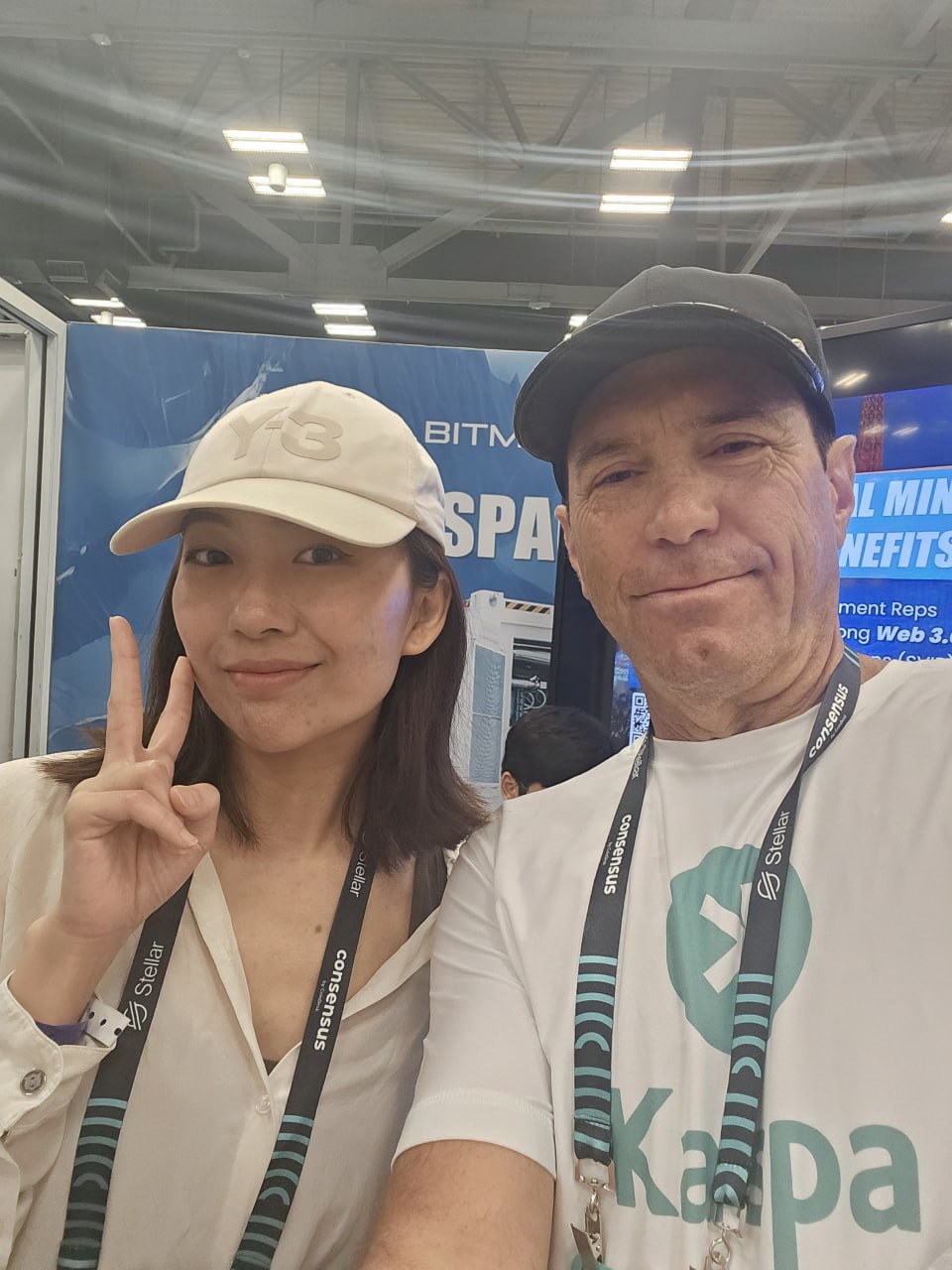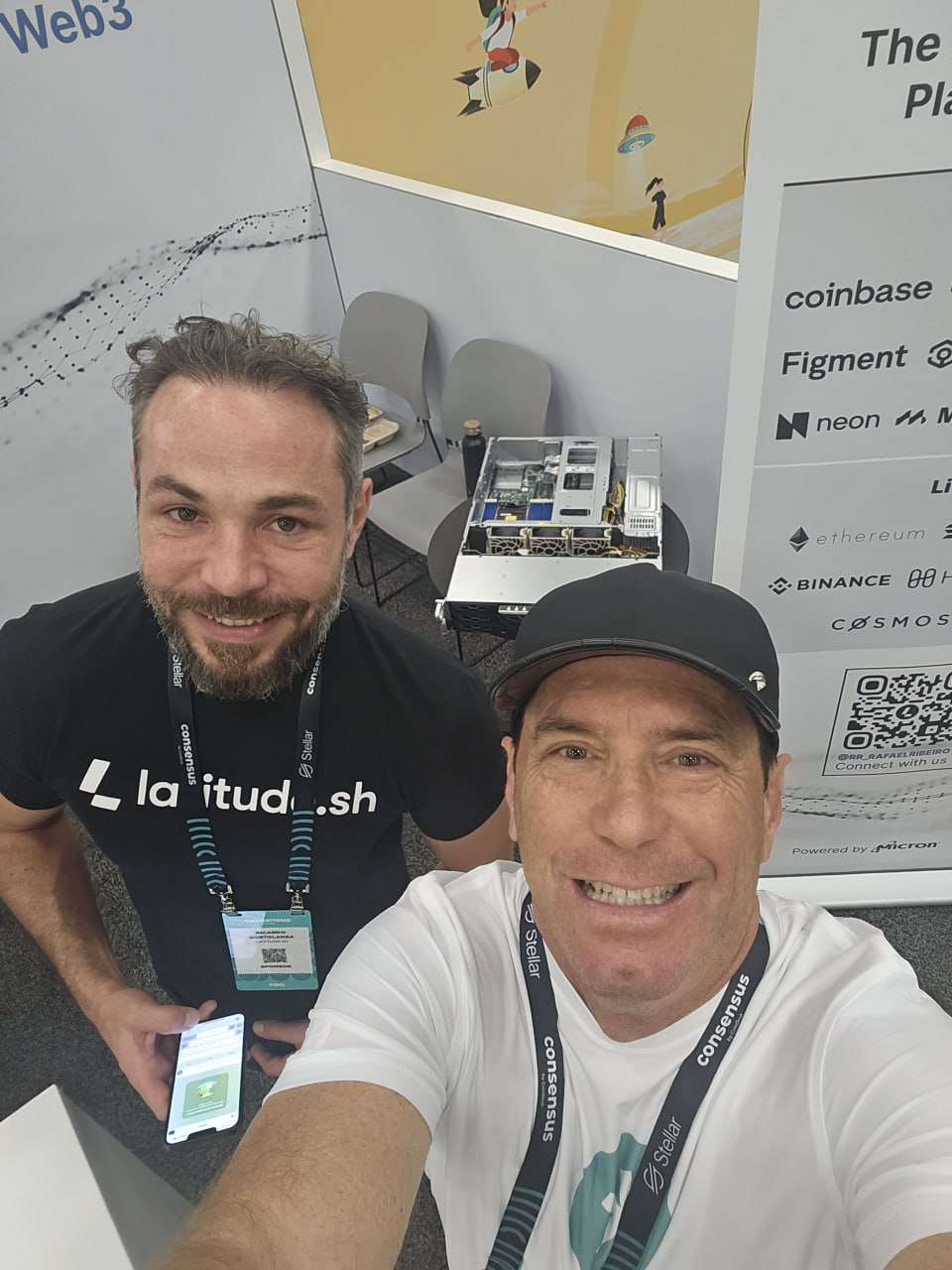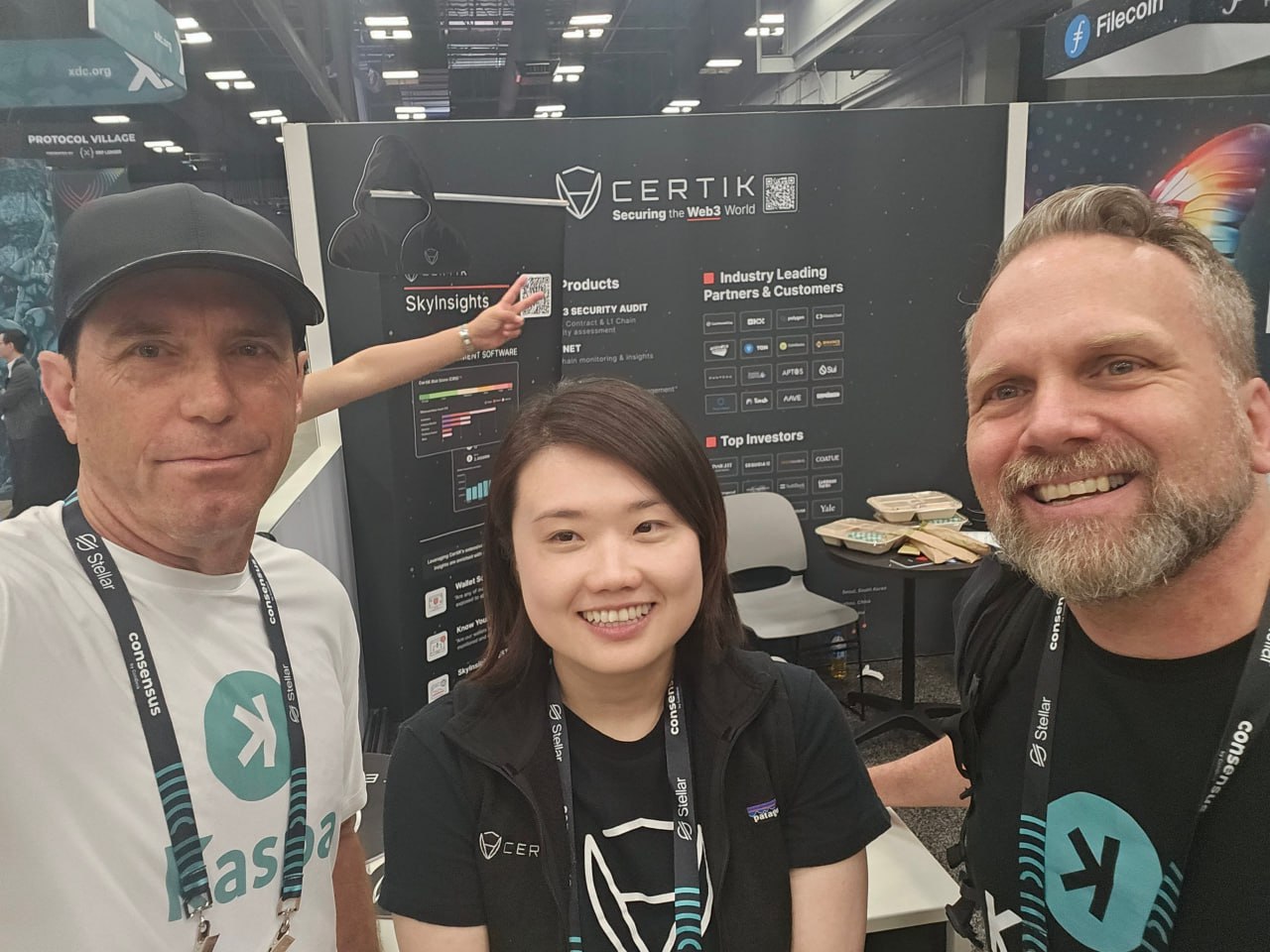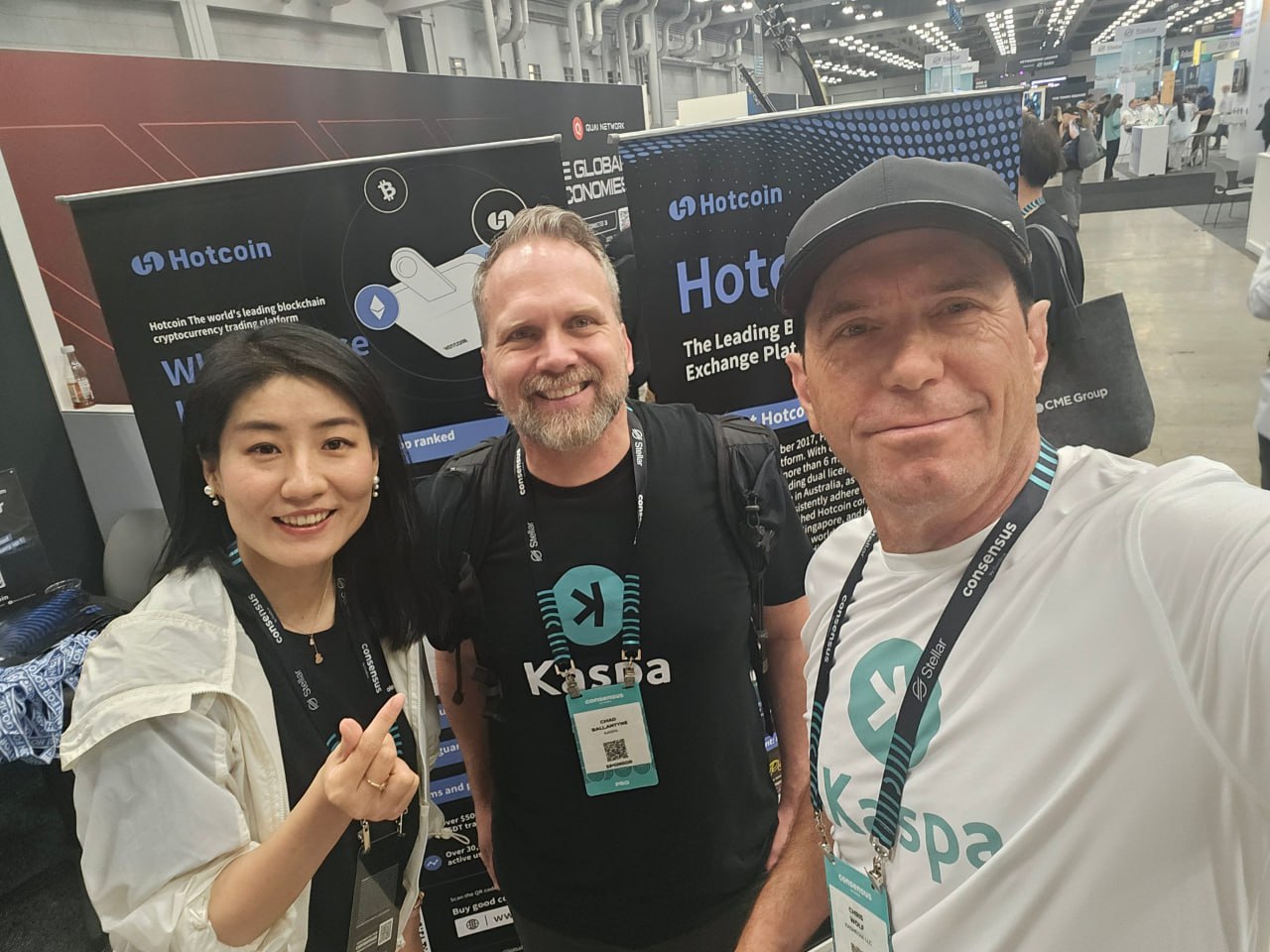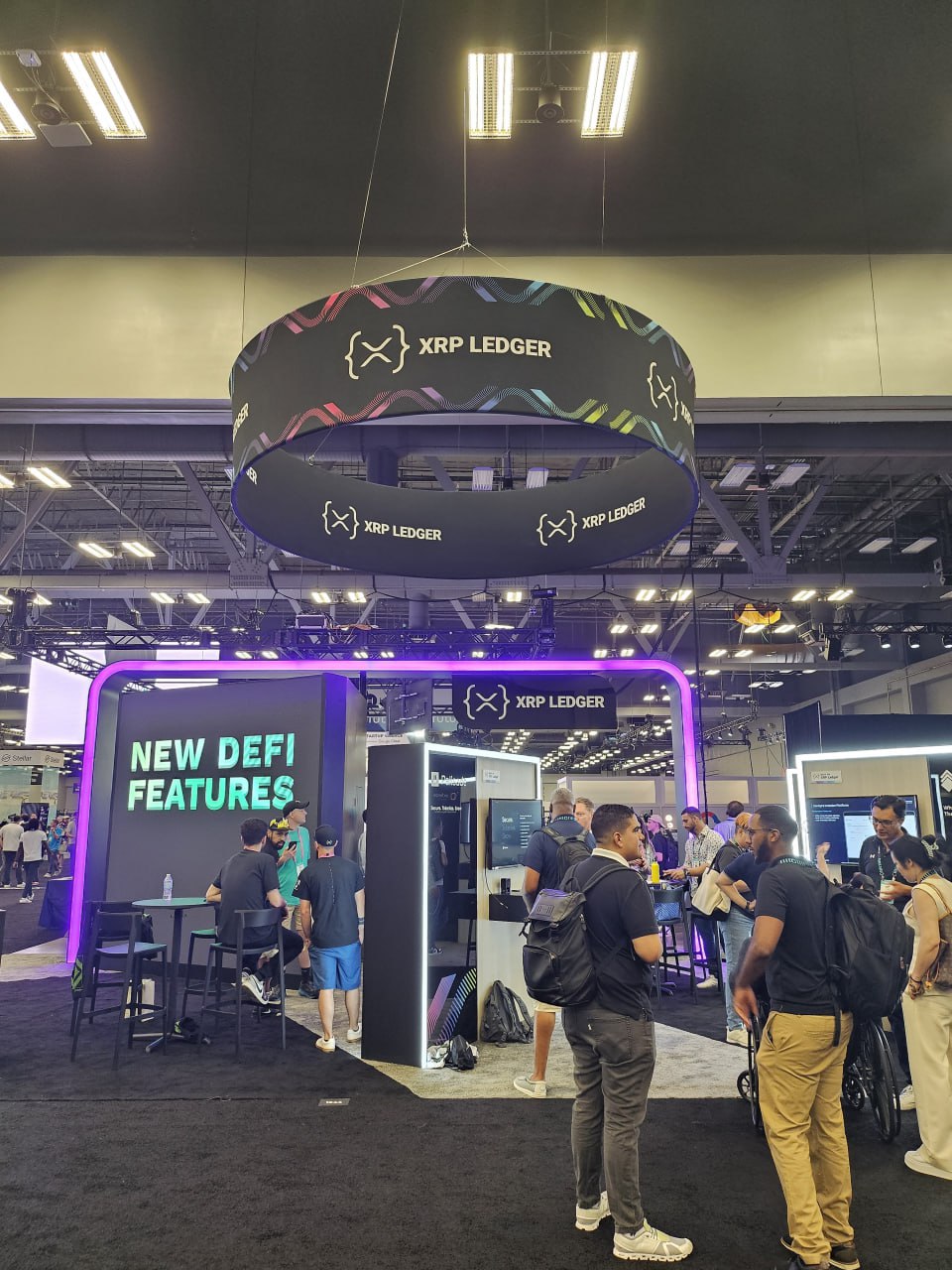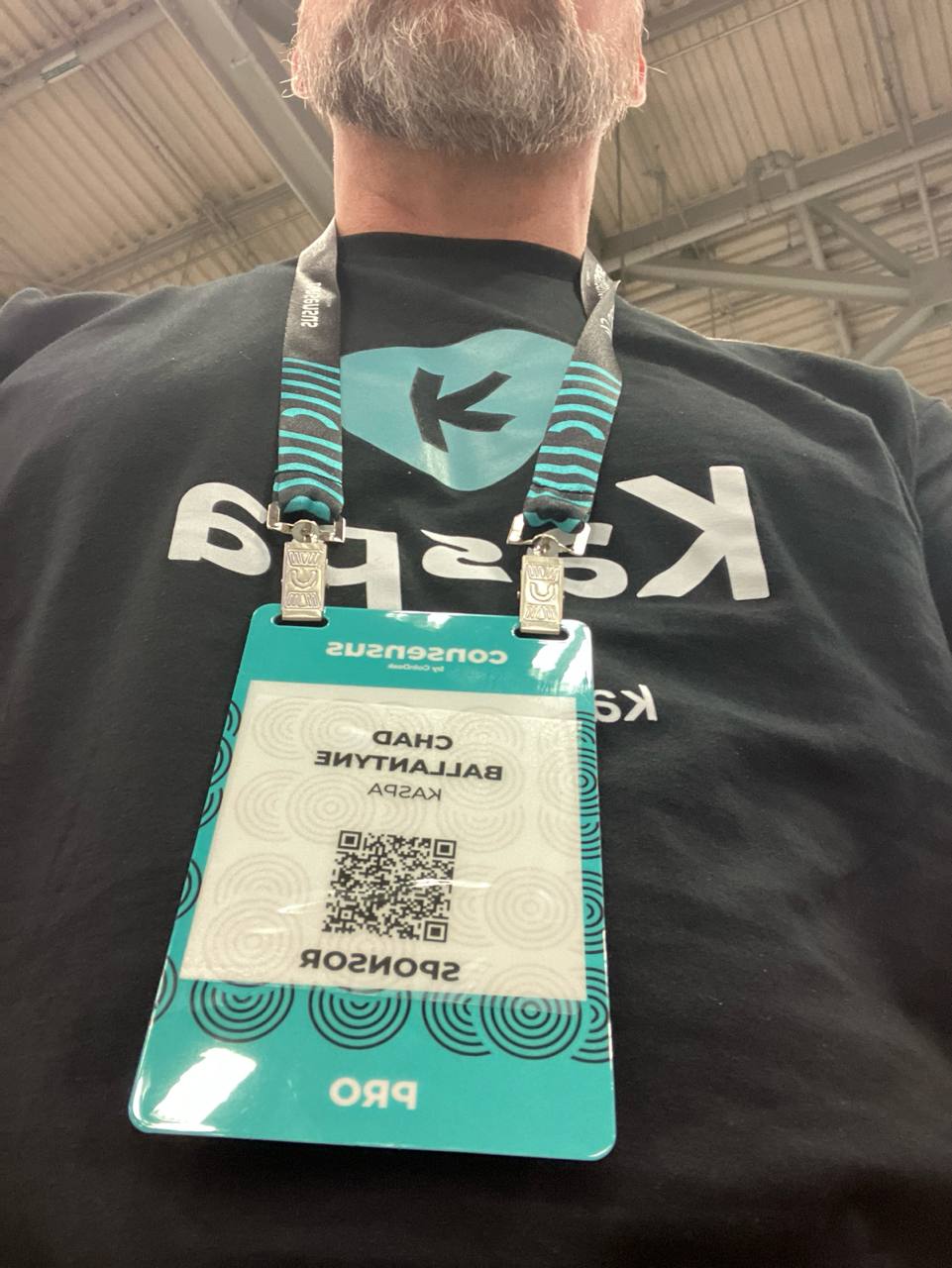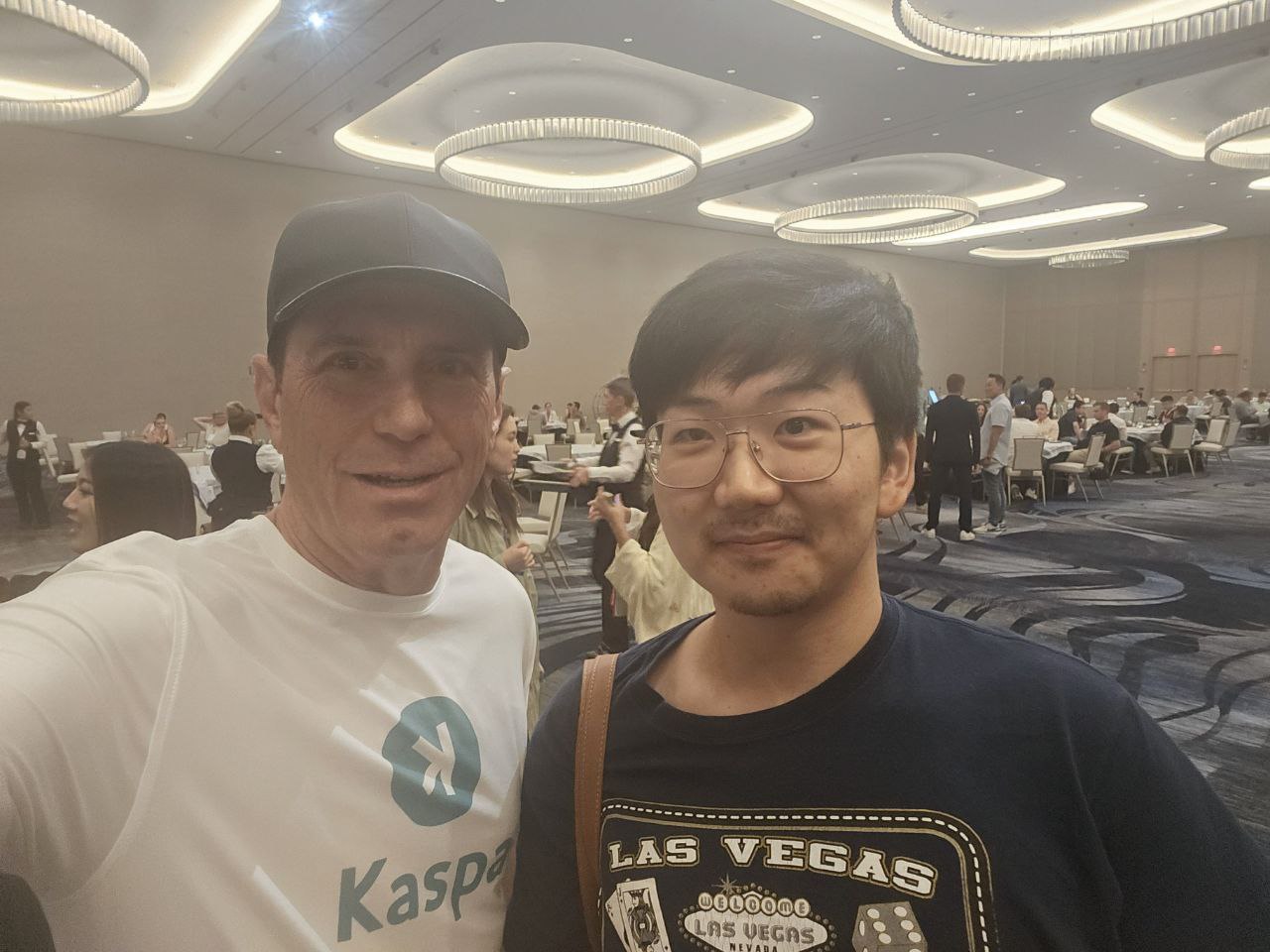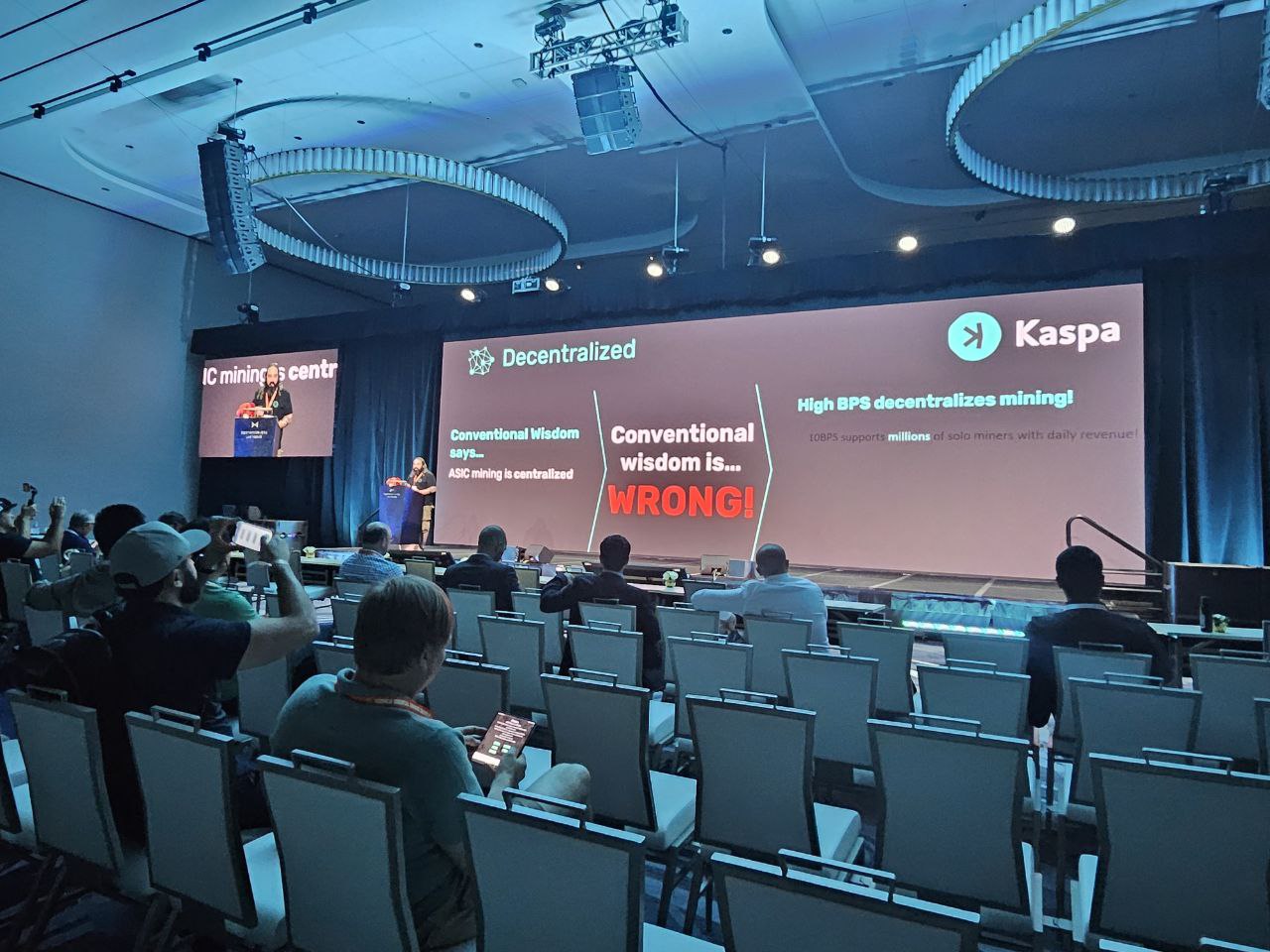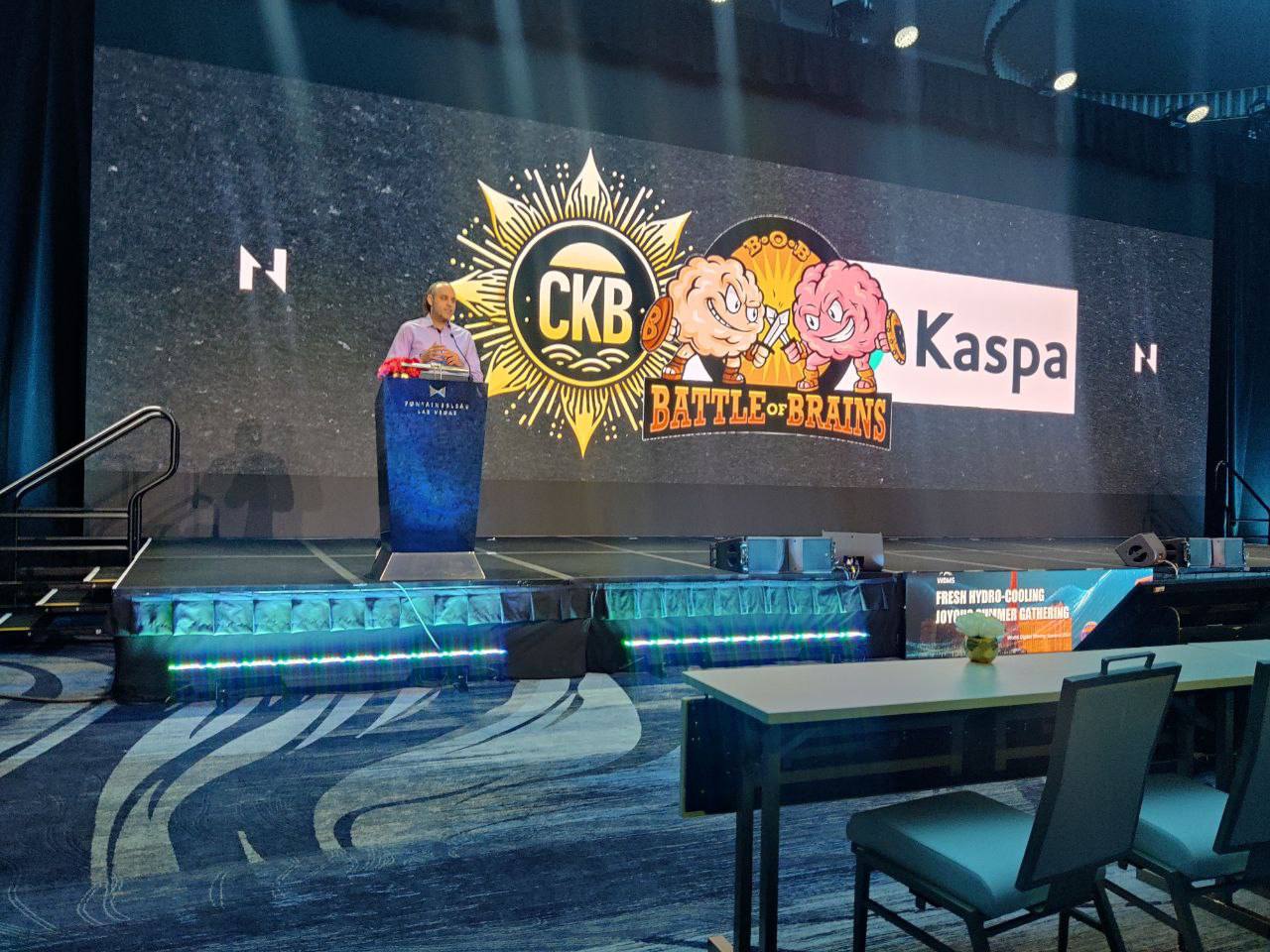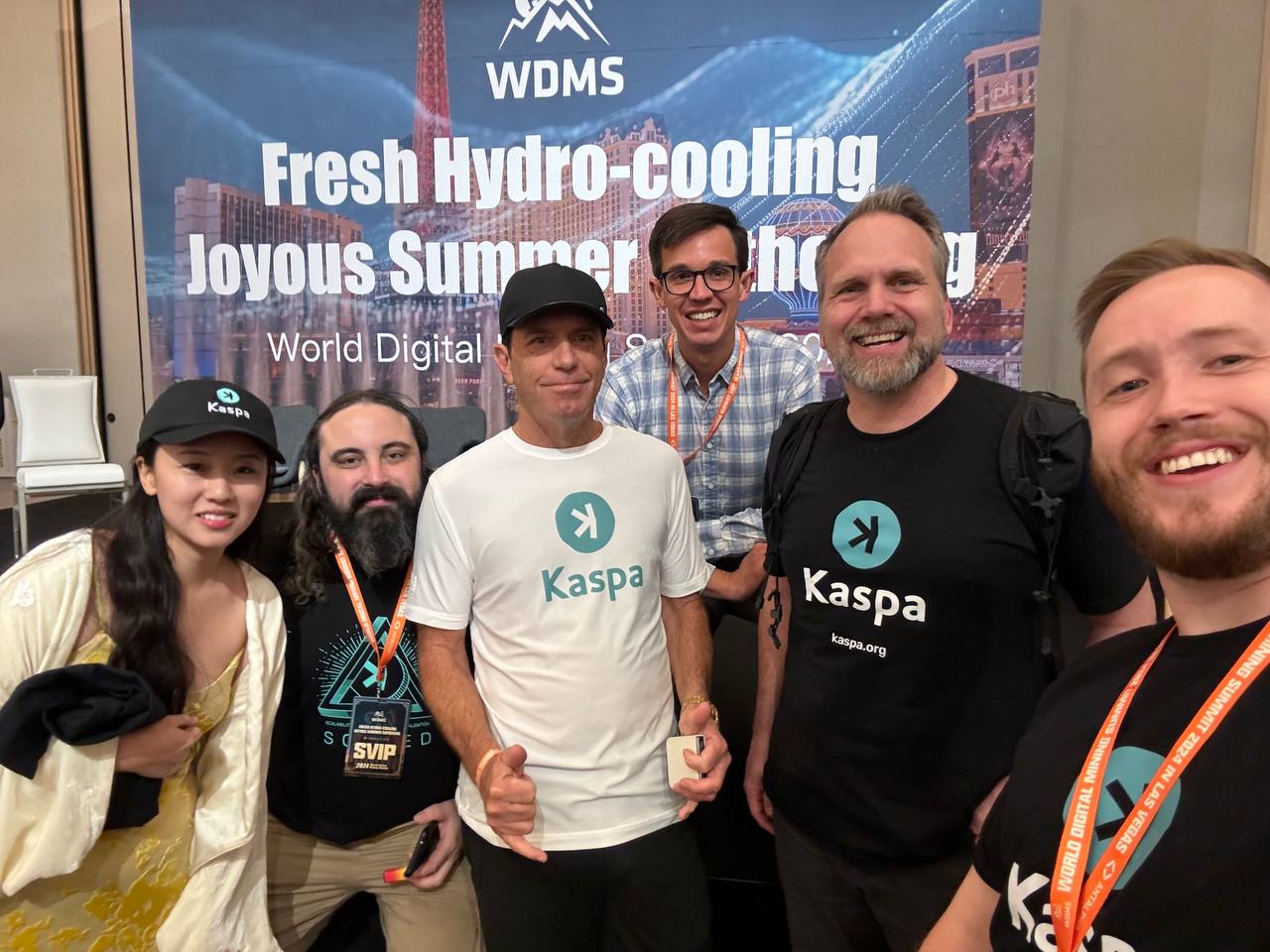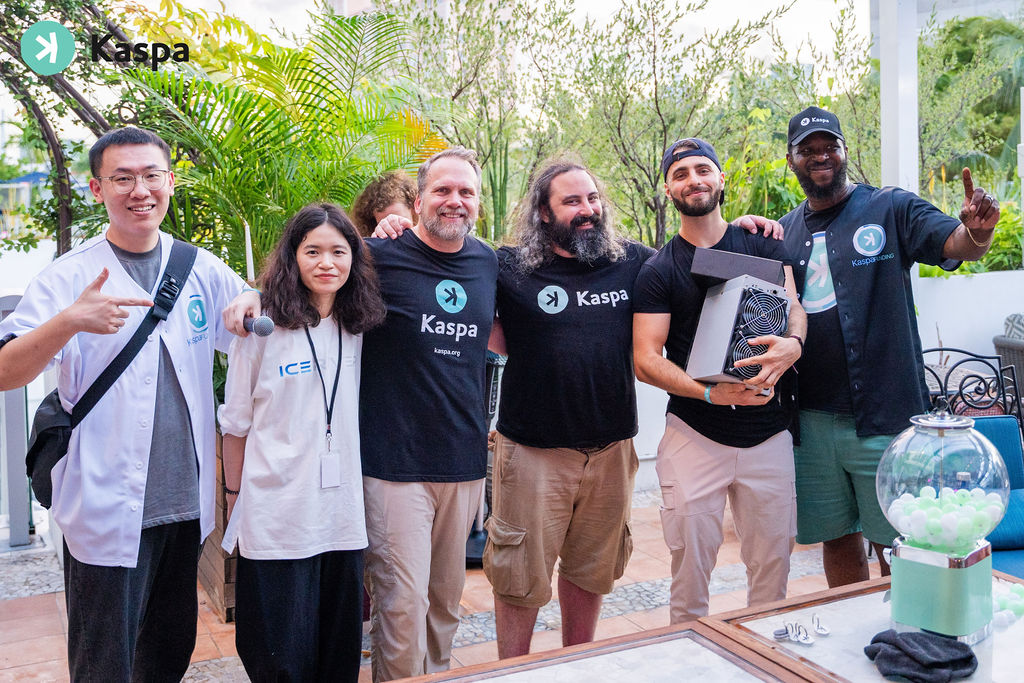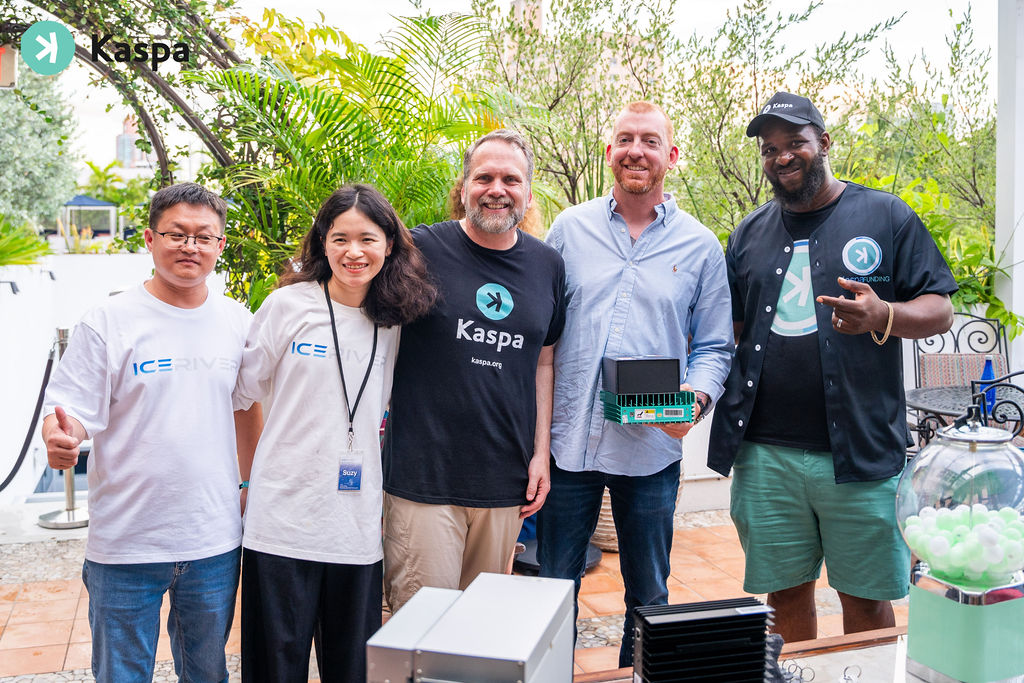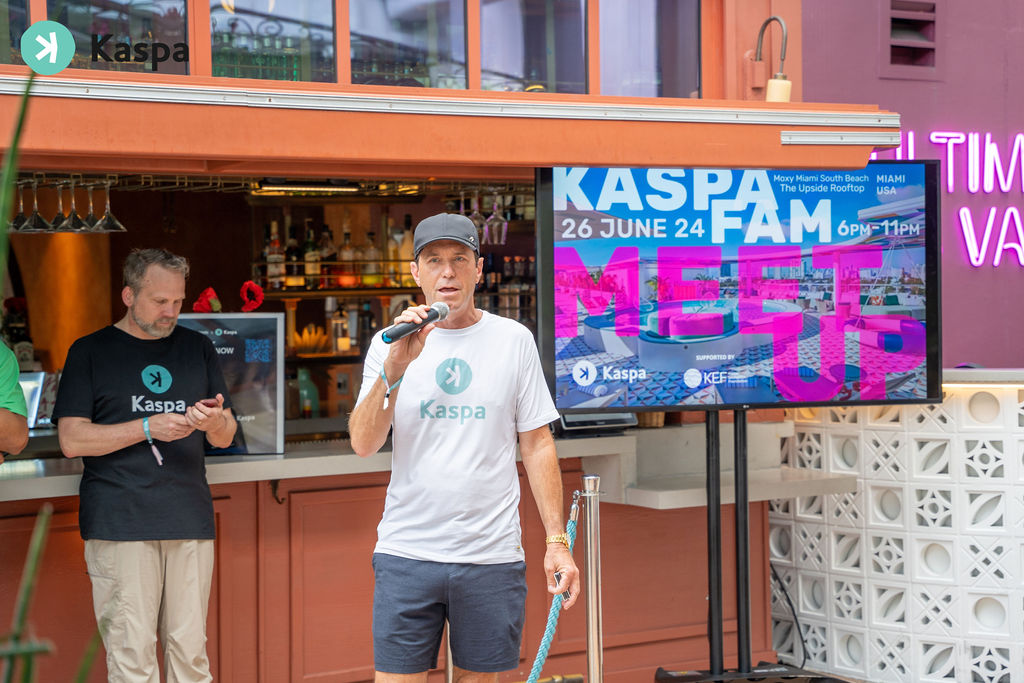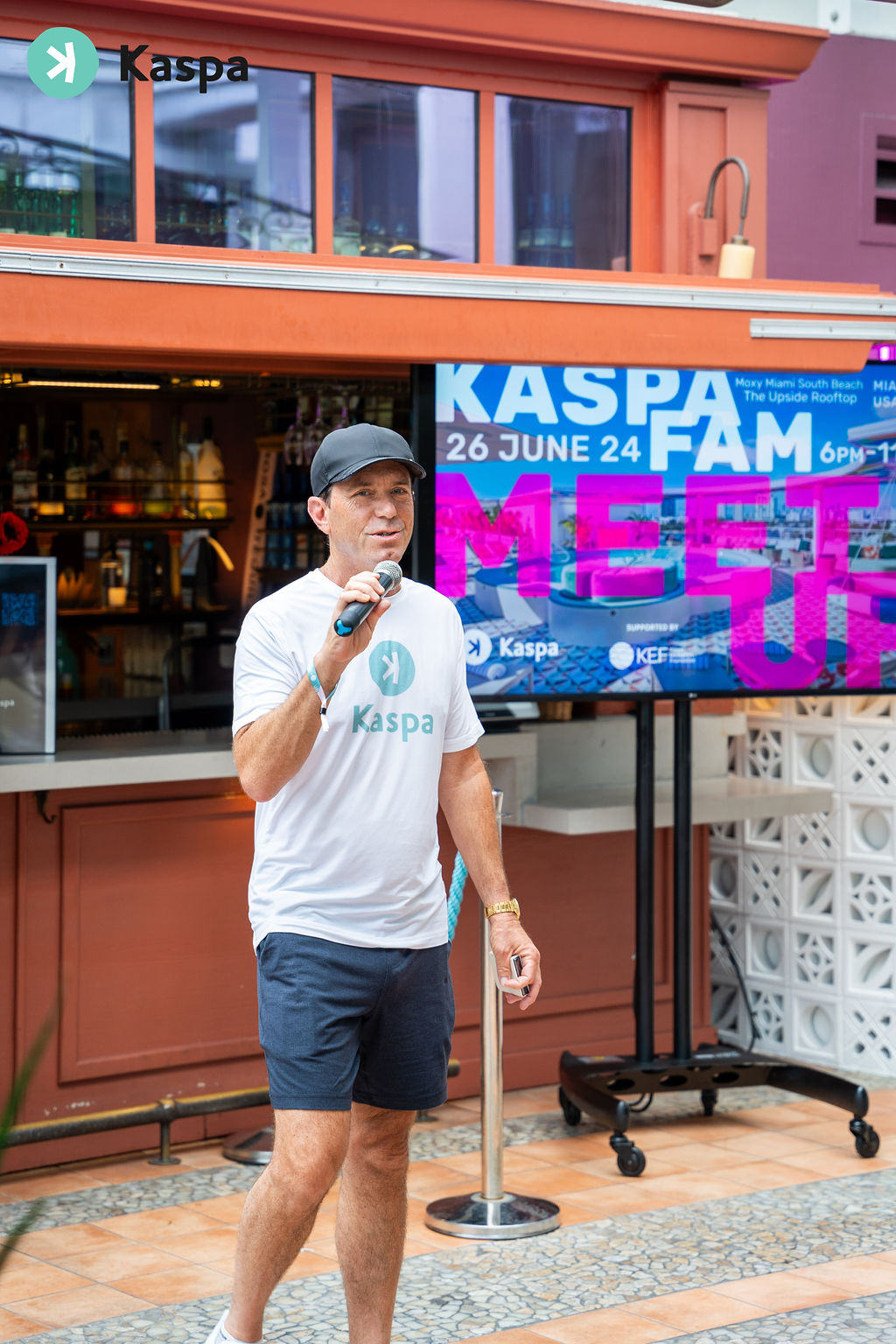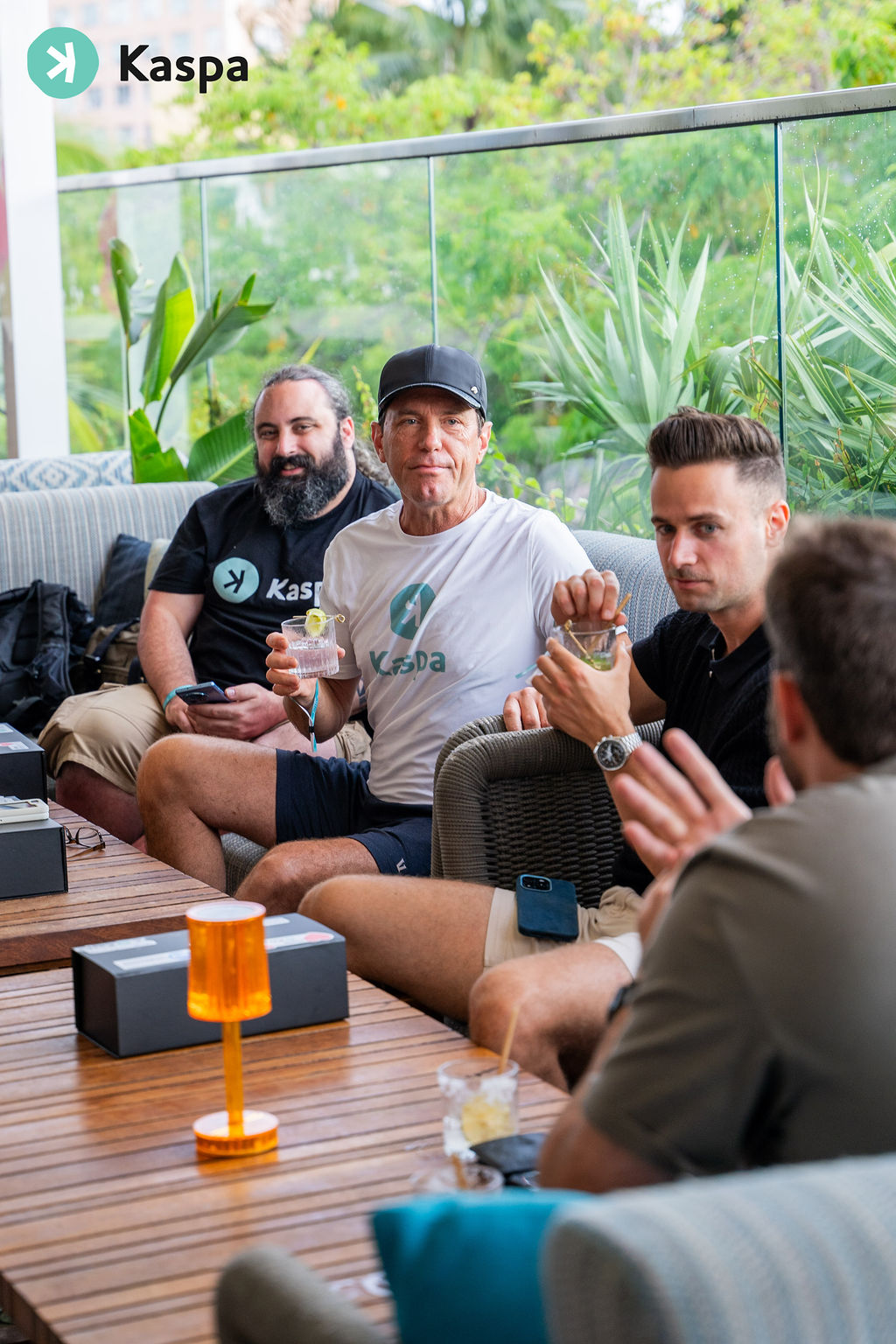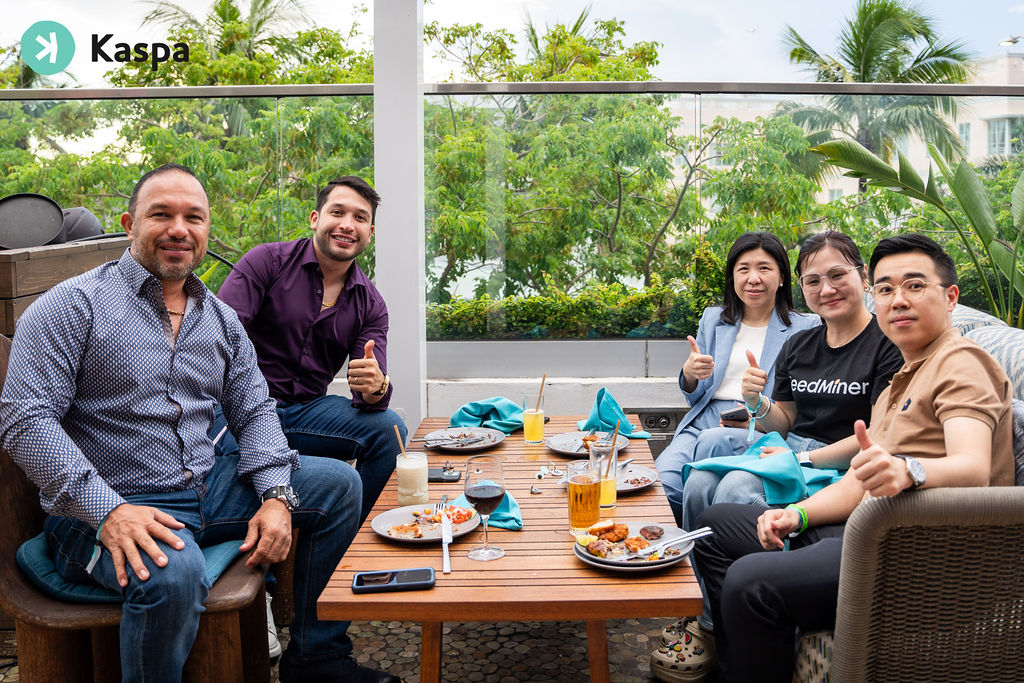Jul 29, 2024 | News
Identifying market trends
Recognizing market trends is crucial in the cryptocurrency space, where rapid shifts can significantly influence investment outcomes. Trends provide insights into market sentiment, helping investors make informed decisions about entering or exiting positions.
One effective way to identify trends is through technical analysis, which involves studying historical price movements and trading volumes. Key indicators, such as moving averages and Relative Strength Index (RSI), offer valuable signals. For instance, a rising 50-day moving average crossing above the 200-day moving average often signals a bullish trend, encouraging investors to consider buying.
Beyond technical indicators, monitoring market news and developments is imperative. Regulatory news, technological advancements, or significant partnerships often drive market sentiment. For example, a major exchange listing a fresh altcoin could spike interest and demand, thereby shaping a new trend.
Additionally, keeping an eye on blockchain metrics can provide deeper insights. Metrics such as active addresses, transaction volumes, and network hash rates offer a glimpse into a blockchain’s health and potential. Increasing active addresses and transaction volumes generally signify growing adoption and confidence in a particular cryptocurrency.
To further enhance trend identification, utilizing sentiment analysis tools can be beneficial. These tools analyze social media platforms, news articles, and forums to gauge the overall mood and opinions surrounding specific assets. A positive sentiment often correlates with upward price movements, while negative sentiment can indicate potential declines.
Combining these strategies—technical analysis, market news monitoring, blockchain metrics, and sentiment analysis—provides a comprehensive approach to identifying market trends. This holistic view helps investors anticipate potential shifts and act accordingly, positioning themselves to maximize returns while mitigating risks.
Evaluating undervalued altcoins
As the year draws to a close, a handful of promising altcoins are poised for significant growth. These hidden gems may offer substantial returns for those who spot the opportunity. This section uncovers three potentially lucrative options in the rapidly evolving crypto market, providing insights into the best picks for end-of-year profits.
Undeads Games (UDS) Shows Growth Potential
Undeads Games (UDS) is currently trading between .18 and .96, showing notable strength. Bulls are gaining ground with a solid increase of over 50% in just a week. With a relative strength index of 58.52 and an additional growth of over 175% in the past month, UDS appears poised for further upward movement. The nearest target is the .33 resistance level, which could represent a growth of about 20% from current prices. Long-term holders have enjoyed a remarkable six-month increase of around 250%, indicating strong bullish potential for the coin.
Source: CoinMarketCap
TRON (TRX) Shows Bulls Ready for a Comeback
TRON (TRX) is currently priced between [gpt_article topic=”Uncover Top Altcoin Opportunities for Year-End Profits: Seize the Moment to Invest in Undervalued Assets” directives=”Format the text for embedding in a WordPress post, using HTML tags. Reword the
As the year draws to a close, a handful of promising altcoins are poised for significant growth. These hidden gems may offer substantial returns for those who spot the opportunity. The article uncovers three potentially lucrative options in the rapidly evolving crypto market, providing insights into the best picks for end-of-year profits.
Undeads Games (UDS) Shows Growth Potential
Undeads Games (UDS) is currently trading between $1.18 and $1.96, showing notable strength. Bulls are gaining ground with a solid increase of over 50% in just a week. With a relative strength index of 58.52 and an additional growth of over 175% in the past month, UDS appears poised for further upward movement. The nearest target is the $2.33 resistance level, which could represent a growth of about 20% from current prices. Long-term holders have enjoyed a remarkable six-month increase of around 250%, indicating strong bullish potential for the coin.
Source: CoinMarketCap
TRON (TRX) Shows Bulls Ready for a Comeback
TRON (TRX) is currently priced between $0.13 and $0.14, with bulls gearing up to break the resistance at $0.14. The coin’s Relative Strength Index (RSI) at 33.29 suggests it is oversold, hinting at potential upward movement. The Stochastic indicator, with a low reading of 7.41, also indicates a bullish opportunity. TRX has increased by 1.51% over the past week and 10.61% over the past month, with a notable six-month gain of 21.62%. If bulls can muster strength, TRX might target the next resistance at $0.15, representing a potential rise of around 7% from its current range.
Notably, Tron’s active addresses are higher than Bitcoin and Ethereum combined, and significantly surpass those of other popular blockchains like Polygon, Solana, and Binance Chain. Additionally, Tron has become the second largest blockchain in the industry, managing over $7.3 billion in total assets.
Source: CoinMarketCap
Kaspa Shows Potential Despite Bullish Weakness
Kaspa (KAS) currently trades between $0.17 and $0.20, with the bulls showing some weakness. The nearest resistance level at $0.21 remains unbroken, indicating that bears might still have some control. However, with the coin’s 10-day moving average at $0.19 and a 100-day average of $0.18, there is potential for steady growth. Over the past six months, Kaspa’s price has surged by over 80%. If it crosses the resistance levels at $0.21 and $0.23, it could see a rise of around 15% to 35% from its current range. The RSI stands mildly bullish at 54.25, signaling more potential upside ahead.
Source: CoinMarketCap
Conclusion
As the year-end approaches, savvy investors have a unique opportunity to capitalize on three promising altcoins poised for significant growth in the back bull run. Undeads Games (UDS) has shown remarkable strength with a recent surge, and with a potential 20% rise ahead, it remains an attractive option. TRON (TRX) is exhibiting signs of a bullish comeback, driven by its oversold status and impressive network activity, aiming for a potential 7% gain. Despite some bearish pressure, Kaspa (KAS) demonstrates potential for steady growth, with possible gains of 15% to 35%. These As the year draws to a close, a handful of promising altcoins are poised for significant growth. These hidden gems may offer substantial returns for those who spot the opportunity. The article uncovers three potentially lucrative options in the rapidly evolving crypto market, providing insights into the best picks for end-of-year profits.
Undeads Games (UDS) Shows Growth Potential
Undeads Games (UDS) is currently trading between $1.18 and $1.96, showing notable strength. Bulls are gaining ground with a solid increase of over 50% in just a week. With a relative strength index of 58.52 and an additional growth of over 175% in the past month, UDS appears poised for further upward movement. The nearest target is the $2.33 resistance level, which could represent a growth of about 20% from current prices. Long-term holders have enjoyed a remarkable six-month increase of around 250%, indicating strong bullish potential for the coin.
Source: CoinMarketCap
TRON (TRX) Shows Bulls Ready for a Comeback
TRON (TRX) is currently priced between $0.13 and $0.14, with bulls gearing up to break the resistance at $0.14. The coin’s Relative Strength Index (RSI) at 33.29 suggests it is oversold, hinting at potential upward movement. The Stochastic indicator, with a low reading of 7.41, also indicates a bullish opportunity. TRX has increased by 1.51% over the past week and 10.61% over the past month, with a notable six-month gain of 21.62%. If bulls can muster strength, TRX might target the next resistance at $0.15, representing a potential rise of around 7% from its current range.
Notably, Tron’s active addresses are higher than Bitcoin and Ethereum combined, and significantly surpass those of other popular blockchains like Polygon, Solana, and Binance Chain. Additionally, Tron has become the second largest blockchain in the industry, managing over $7.3 billion in total assets.
Source: CoinMarketCap
Kaspa Shows Potential Despite Bullish Weakness
Kaspa (KAS) currently trades between $0.17 and $0.20, with the bulls showing some weakness. The nearest resistance level at $0.21 remains unbroken, indicating that bears might still have some control. However, with the coin’s 10-day moving average at $0.19 and a 100-day average of $0.18, there is potential for steady growth. Over the past six months, Kaspa’s price has surged by over 80%. If it crosses the resistance levels at $0.21 and $0.23, it could see a rise of around 15% to 35% from its current range. The RSI stands mildly bullish at 54.25, signaling more potential upside ahead.
Source: CoinMarketCap
Conclusion
As the year-end approaches, savvy investors have a unique opportunity to capitalize on three promising altcoins poised for significant growth in the back bull run. Undeads Games (UDS) has shown remarkable strength with a recent surge, and with a potential 20% rise ahead, it remains an attractive option. TRON (TRX) is exhibiting signs of a bullish comeback, driven by its oversold status and impressive network activity, aiming for a potential 7% gain. Despite some bearish pressure, Kaspa (KAS) demonstrates potential for steady growth, with possible gains of 15% to 35%. These As the year draws to a close, a handful of promising altcoins are poised for significant growth. These hidden gems may offer substantial returns for those who spot the opportunity. The article uncovers three potentially lucrative options in the rapidly evolving crypto market, providing insights into the best picks for end-of-year profits.
Undeads Games (UDS) Shows Growth Potential
Undeads Games (UDS) is currently trading between $1.18 and $1.96, showing notable strength. Bulls are gaining ground with a solid increase of over 50% in just a week. With a relative strength index of 58.52 and an additional growth of over 175% in the past month, UDS appears poised for further upward movement. The nearest target is the $2.33 resistance level, which could represent a growth of about 20% from current prices. Long-term holders have enjoyed a remarkable six-month increase of around 250%, indicating strong bullish potential for the coin.
Source: CoinMarketCap
TRON (TRX) Shows Bulls Ready for a Comeback
TRON (TRX) is currently priced between $0.13 and $0.14, with bulls gearing up to break the resistance at $0.14. The coin’s Relative Strength Index (RSI) at 33.29 suggests it is oversold, hinting at potential upward movement. The Stochastic indicator, with a low reading of 7.41, also indicates a bullish opportunity. TRX has increased by 1.51% over the past week and 10.61% over the past month, with a notable six-month gain of 21.62%. If bulls can muster strength, TRX might target the next resistance at $0.15, representing a potential rise of around 7% from its current range.
Notably, Tron’s active addresses are higher than Bitcoin and Ethereum combined, and significantly surpass those of other popular blockchains like Polygon, Solana, and Binance Chain. Additionally, Tron has become the second largest blockchain in the industry, managing over $7.3 billion in total assets.
Source: CoinMarketCap
Kaspa Shows Potential Despite Bullish Weakness
Kaspa (KAS) currently trades between $0.17 and $0.20, with the bulls showing some weakness. The nearest resistance level at $0.21 remains unbroken, indicating that bears might still have some control. However, with the coin’s 10-day moving average at $0.19 and a 100-day average of $0.18, there is potential for steady growth. Over the past six months, Kaspa’s price has surged by over 80%. If it crosses the resistance levels at $0.21 and $0.23, it could see a rise of around 15% to 35% from its current range. The RSI stands mildly bullish at 54.25, signaling more potential upside ahead.
Source: CoinMarketCap
Conclusion
As the year-end approaches, savvy investors have a unique opportunity to capitalize on three promising altcoins poised for significant growth in the back bull run. Undeads Games (UDS) has shown remarkable strength with a recent surge, and with a potential 20% rise ahead, it remains an attractive option. TRON (TRX) is exhibiting signs of a bullish comeback, driven by its oversold status and impressive network activity, aiming for a potential 7% gain. Despite some bearish pressure, Kaspa (KAS) demonstrates potential for steady growth, with possible gains of 15% to 35%. These As the year draws to a close, a handful of promising altcoins are poised for significant growth. These hidden gems may offer substantial returns for those who spot the opportunity. The article uncovers three potentially lucrative options in the rapidly evolving crypto market, providing insights into the best picks for end-of-year profits.
Undeads Games (UDS) Shows Growth Potential
Undeads Games (UDS) is currently trading between $1.18 and $1.96, showing notable strength. Bulls are gaining ground with a solid increase of over 50% in just a week. With a relative strength index of 58.52 and an additional growth of over 175% in the past month, UDS appears poised for further upward movement. The nearest target is the $2.33 resistance level, which could represent a growth of about 20% from current prices. Long-term holders have enjoyed a remarkable six-month increase of around 250%, indicating strong bullish potential for the coin.
Source: CoinMarketCap
TRON (TRX) Shows Bulls Ready for a Comeback
TRON (TRX) is currently priced between $0.13 and $0.14, with bulls gearing up to break the resistance at $0.14. The coin’s Relative Strength Index (RSI) at 33.29 suggests it is oversold, hinting at potential upward movement. The Stochastic indicator, with a low reading of 7.41, also indicates a bullish opportunity. TRX has increased by 1.51% over the past week and 10.61% over the past month, with a notable six-month gain of 21.62%. If bulls can muster strength, TRX might target the next resistance at $0.15, representing a potential rise of around 7% from its current range.
Notably, Tron’s active addresses are higher than Bitcoin and Ethereum combined, and significantly surpass those of other popular blockchains like Polygon, Solana, and Binance Chain. Additionally, Tron has become the second largest blockchain in the industry, managing over $7.3 billion in total assets.
Source: CoinMarketCap
Kaspa Shows Potential Despite Bullish Weakness
Kaspa (KAS) currently trades between $0.17 and $0.20, with the bulls showing some weakness. The nearest resistance level at $0.21 remains unbroken, indicating that bears might still have some control. However, with the coin’s 10-day moving average at $0.19 and a 100-day average of $0.18, there is potential for steady growth. Over the past six months, Kaspa’s price has surged by over 80%. If it crosses the resistance levels at $0.21 and $0.23, it could see a rise of around 15% to 35% from its current range. The RSI stands mildly bullish at 54.25, signaling more potential upside ahead.
Source: CoinMarketCap
Conclusion
As the year-end approaches, savvy investors have a unique opportunity to capitalize on three promising altcoins poised for significant growth in the back bull run. Undeads Games (UDS) has shown remarkable strength with a recent surge, and with a potential 20% rise ahead, it remains an attractive option. TRON (TRX) is exhibiting signs of a bullish comeback, driven by its oversold status and impressive network activity, aiming for a potential 7% gain. Despite some bearish pressure, Kaspa (KAS) demonstrates potential for steady growth, with possible gains of 15% to 35%. These
Notably, Tron’s active addresses are higher than Bitcoin and Ethereum combined, and significantly surpass those of other popular blockchains like Polygon, Solana, and Binance Chain. Additionally, Tron has become the second largest blockchain in the industry, managing over .3 billion in total assets.
Source: CoinMarketCap
Kaspa Shows Potential Despite Bullish Weakness
Kaspa (KAS) currently trades between [gpt_article topic=”Uncover Top Altcoin Opportunities for Year-End Profits: Seize the Moment to Invest in Undervalued Assets” directives=”Format the text for embedding in a WordPress post, using HTML tags. Reword the
As the year draws to a close, a handful of promising altcoins are poised for significant growth. These hidden gems may offer substantial returns for those who spot the opportunity. The article uncovers three potentially lucrative options in the rapidly evolving crypto market, providing insights into the best picks for end-of-year profits.
Undeads Games (UDS) Shows Growth Potential
Undeads Games (UDS) is currently trading between $1.18 and $1.96, showing notable strength. Bulls are gaining ground with a solid increase of over 50% in just a week. With a relative strength index of 58.52 and an additional growth of over 175% in the past month, UDS appears poised for further upward movement. The nearest target is the $2.33 resistance level, which could represent a growth of about 20% from current prices. Long-term holders have enjoyed a remarkable six-month increase of around 250%, indicating strong bullish potential for the coin.
Source: CoinMarketCap
TRON (TRX) Shows Bulls Ready for a Comeback
TRON (TRX) is currently priced between $0.13 and $0.14, with bulls gearing up to break the resistance at $0.14. The coin’s Relative Strength Index (RSI) at 33.29 suggests it is oversold, hinting at potential upward movement. The Stochastic indicator, with a low reading of 7.41, also indicates a bullish opportunity. TRX has increased by 1.51% over the past week and 10.61% over the past month, with a notable six-month gain of 21.62%. If bulls can muster strength, TRX might target the next resistance at $0.15, representing a potential rise of around 7% from its current range.
Notably, Tron’s active addresses are higher than Bitcoin and Ethereum combined, and significantly surpass those of other popular blockchains like Polygon, Solana, and Binance Chain. Additionally, Tron has become the second largest blockchain in the industry, managing over $7.3 billion in total assets.
Source: CoinMarketCap
Kaspa Shows Potential Despite Bullish Weakness
Kaspa (KAS) currently trades between $0.17 and $0.20, with the bulls showing some weakness. The nearest resistance level at $0.21 remains unbroken, indicating that bears might still have some control. However, with the coin’s 10-day moving average at $0.19 and a 100-day average of $0.18, there is potential for steady growth. Over the past six months, Kaspa’s price has surged by over 80%. If it crosses the resistance levels at $0.21 and $0.23, it could see a rise of around 15% to 35% from its current range. The RSI stands mildly bullish at 54.25, signaling more potential upside ahead.
Source: CoinMarketCap
Conclusion
As the year-end approaches, savvy investors have a unique opportunity to capitalize on three promising altcoins poised for significant growth in the back bull run. Undeads Games (UDS) has shown remarkable strength with a recent surge, and with a potential 20% rise ahead, it remains an attractive option. TRON (TRX) is exhibiting signs of a bullish comeback, driven by its oversold status and impressive network activity, aiming for a potential 7% gain. Despite some bearish pressure, Kaspa (KAS) demonstrates potential for steady growth, with possible gains of 15% to 35%. These As the year draws to a close, a handful of promising altcoins are poised for significant growth. These hidden gems may offer substantial returns for those who spot the opportunity. The article uncovers three potentially lucrative options in the rapidly evolving crypto market, providing insights into the best picks for end-of-year profits.
Undeads Games (UDS) Shows Growth Potential
Undeads Games (UDS) is currently trading between $1.18 and $1.96, showing notable strength. Bulls are gaining ground with a solid increase of over 50% in just a week. With a relative strength index of 58.52 and an additional growth of over 175% in the past month, UDS appears poised for further upward movement. The nearest target is the $2.33 resistance level, which could represent a growth of about 20% from current prices. Long-term holders have enjoyed a remarkable six-month increase of around 250%, indicating strong bullish potential for the coin.
Source: CoinMarketCap
TRON (TRX) Shows Bulls Ready for a Comeback
TRON (TRX) is currently priced between $0.13 and $0.14, with bulls gearing up to break the resistance at $0.14. The coin’s Relative Strength Index (RSI) at 33.29 suggests it is oversold, hinting at potential upward movement. The Stochastic indicator, with a low reading of 7.41, also indicates a bullish opportunity. TRX has increased by 1.51% over the past week and 10.61% over the past month, with a notable six-month gain of 21.62%. If bulls can muster strength, TRX might target the next resistance at $0.15, representing a potential rise of around 7% from its current range.
Notably, Tron’s active addresses are higher than Bitcoin and Ethereum combined, and significantly surpass those of other popular blockchains like Polygon, Solana, and Binance Chain. Additionally, Tron has become the second largest blockchain in the industry, managing over $7.3 billion in total assets.
Source: CoinMarketCap
Kaspa Shows Potential Despite Bullish Weakness
Kaspa (KAS) currently trades between $0.17 and $0.20, with the bulls showing some weakness. The nearest resistance level at $0.21 remains unbroken, indicating that bears might still have some control. However, with the coin’s 10-day moving average at $0.19 and a 100-day average of $0.18, there is potential for steady growth. Over the past six months, Kaspa’s price has surged by over 80%. If it crosses the resistance levels at $0.21 and $0.23, it could see a rise of around 15% to 35% from its current range. The RSI stands mildly bullish at 54.25, signaling more potential upside ahead.
Source: CoinMarketCap
Conclusion
As the year-end approaches, savvy investors have a unique opportunity to capitalize on three promising altcoins poised for significant growth in the back bull run. Undeads Games (UDS) has shown remarkable strength with a recent surge, and with a potential 20% rise ahead, it remains an attractive option. TRON (TRX) is exhibiting signs of a bullish comeback, driven by its oversold status and impressive network activity, aiming for a potential 7% gain. Despite some bearish pressure, Kaspa (KAS) demonstrates potential for steady growth, with possible gains of 15% to 35%. These As the year draws to a close, a handful of promising altcoins are poised for significant growth. These hidden gems may offer substantial returns for those who spot the opportunity. The article uncovers three potentially lucrative options in the rapidly evolving crypto market, providing insights into the best picks for end-of-year profits.
Undeads Games (UDS) Shows Growth Potential
Undeads Games (UDS) is currently trading between $1.18 and $1.96, showing notable strength. Bulls are gaining ground with a solid increase of over 50% in just a week. With a relative strength index of 58.52 and an additional growth of over 175% in the past month, UDS appears poised for further upward movement. The nearest target is the $2.33 resistance level, which could represent a growth of about 20% from current prices. Long-term holders have enjoyed a remarkable six-month increase of around 250%, indicating strong bullish potential for the coin.
Source: CoinMarketCap
TRON (TRX) Shows Bulls Ready for a Comeback
TRON (TRX) is currently priced between $0.13 and $0.14, with bulls gearing up to break the resistance at $0.14. The coin’s Relative Strength Index (RSI) at 33.29 suggests it is oversold, hinting at potential upward movement. The Stochastic indicator, with a low reading of 7.41, also indicates a bullish opportunity. TRX has increased by 1.51% over the past week and 10.61% over the past month, with a notable six-month gain of 21.62%. If bulls can muster strength, TRX might target the next resistance at $0.15, representing a potential rise of around 7% from its current range.
Notably, Tron’s active addresses are higher than Bitcoin and Ethereum combined, and significantly surpass those of other popular blockchains like Polygon, Solana, and Binance Chain. Additionally, Tron has become the second largest blockchain in the industry, managing over $7.3 billion in total assets.
Source: CoinMarketCap
Kaspa Shows Potential Despite Bullish Weakness
Kaspa (KAS) currently trades between $0.17 and $0.20, with the bulls showing some weakness. The nearest resistance level at $0.21 remains unbroken, indicating that bears might still have some control. However, with the coin’s 10-day moving average at $0.19 and a 100-day average of $0.18, there is potential for steady growth. Over the past six months, Kaspa’s price has surged by over 80%. If it crosses the resistance levels at $0.21 and $0.23, it could see a rise of around 15% to 35% from its current range. The RSI stands mildly bullish at 54.25, signaling more potential upside ahead.
Source: CoinMarketCap
Conclusion
As the year-end approaches, savvy investors have a unique opportunity to capitalize on three promising altcoins poised for significant growth in the back bull run. Undeads Games (UDS) has shown remarkable strength with a recent surge, and with a potential 20% rise ahead, it remains an attractive option. TRON (TRX) is exhibiting signs of a bullish comeback, driven by its oversold status and impressive network activity, aiming for a potential 7% gain. Despite some bearish pressure, Kaspa (KAS) demonstrates potential for steady growth, with possible gains of 15% to 35%. These As the year draws to a close, a handful of promising altcoins are poised for significant growth. These hidden gems may offer substantial returns for those who spot the opportunity. The article uncovers three potentially lucrative options in the rapidly evolving crypto market, providing insights into the best picks for end-of-year profits.
Undeads Games (UDS) Shows Growth Potential
Undeads Games (UDS) is currently trading between $1.18 and $1.96, showing notable strength. Bulls are gaining ground with a solid increase of over 50% in just a week. With a relative strength index of 58.52 and an additional growth of over 175% in the past month, UDS appears poised for further upward movement. The nearest target is the $2.33 resistance level, which could represent a growth of about 20% from current prices. Long-term holders have enjoyed a remarkable six-month increase of around 250%, indicating strong bullish potential for the coin.
Source: CoinMarketCap
TRON (TRX) Shows Bulls Ready for a Comeback
TRON (TRX) is currently priced between $0.13 and $0.14, with bulls gearing up to break the resistance at $0.14. The coin’s Relative Strength Index (RSI) at 33.29 suggests it is oversold, hinting at potential upward movement. The Stochastic indicator, with a low reading of 7.41, also indicates a bullish opportunity. TRX has increased by 1.51% over the past week and 10.61% over the past month, with a notable six-month gain of 21.62%. If bulls can muster strength, TRX might target the next resistance at $0.15, representing a potential rise of around 7% from its current range.
Notably, Tron’s active addresses are higher than Bitcoin and Ethereum combined, and significantly surpass those of other popular blockchains like Polygon, Solana, and Binance Chain. Additionally, Tron has become the second largest blockchain in the industry, managing over $7.3 billion in total assets.
Source: CoinMarketCap
Kaspa Shows Potential Despite Bullish Weakness
Kaspa (KAS) currently trades between $0.17 and $0.20, with the bulls showing some weakness. The nearest resistance level at $0.21 remains unbroken, indicating that bears might still have some control. However, with the coin’s 10-day moving average at $0.19 and a 100-day average of $0.18, there is potential for steady growth. Over the past six months, Kaspa’s price has surged by over 80%. If it crosses the resistance levels at $0.21 and $0.23, it could see a rise of around 15% to 35% from its current range. The RSI stands mildly bullish at 54.25, signaling more potential upside ahead.
Source: CoinMarketCap
Conclusion
As the year-end approaches, savvy investors have a unique opportunity to capitalize on three promising altcoins poised for significant growth in the back bull run. Undeads Games (UDS) has shown remarkable strength with a recent surge, and with a potential 20% rise ahead, it remains an attractive option. TRON (TRX) is exhibiting signs of a bullish comeback, driven by its oversold status and impressive network activity, aiming for a potential 7% gain. Despite some bearish pressure, Kaspa (KAS) demonstrates potential for steady growth, with possible gains of 15% to 35%. These As the year draws to a close, a handful of promising altcoins are poised for significant growth. These hidden gems may offer substantial returns for those who spot the opportunity. The article uncovers three potentially lucrative options in the rapidly evolving crypto market, providing insights into the best picks for end-of-year profits.
Undeads Games (UDS) Shows Growth Potential
Undeads Games (UDS) is currently trading between $1.18 and $1.96, showing notable strength. Bulls are gaining ground with a solid increase of over 50% in just a week. With a relative strength index of 58.52 and an additional growth of over 175% in the past month, UDS appears poised for further upward movement. The nearest target is the $2.33 resistance level, which could represent a growth of about 20% from current prices. Long-term holders have enjoyed a remarkable six-month increase of around 250%, indicating strong bullish potential for the coin.
Source: CoinMarketCap
TRON (TRX) Shows Bulls Ready for a Comeback
TRON (TRX) is currently priced between $0.13 and $0.14, with bulls gearing up to break the resistance at $0.14. The coin’s Relative Strength Index (RSI) at 33.29 suggests it is oversold, hinting at potential upward movement. The Stochastic indicator, with a low reading of 7.41, also indicates a bullish opportunity. TRX has increased by 1.51% over the past week and 10.61% over the past month, with a notable six-month gain of 21.62%. If bulls can muster strength, TRX might target the next resistance at $0.15, representing a potential rise of around 7% from its current range.
Notably, Tron’s active addresses are higher than Bitcoin and Ethereum combined, and significantly surpass those of other popular blockchains like Polygon, Solana, and Binance Chain. Additionally, Tron has become the second largest blockchain in the industry, managing over $7.3 billion in total assets.
Source: CoinMarketCap
Kaspa Shows Potential Despite Bullish Weakness
Kaspa (KAS) currently trades between $0.17 and $0.20, with the bulls showing some weakness. The nearest resistance level at $0.21 remains unbroken, indicating that bears might still have some control. However, with the coin’s 10-day moving average at $0.19 and a 100-day average of $0.18, there is potential for steady growth. Over the past six months, Kaspa’s price has surged by over 80%. If it crosses the resistance levels at $0.21 and $0.23, it could see a rise of around 15% to 35% from its current range. The RSI stands mildly bullish at 54.25, signaling more potential upside ahead.
Source: CoinMarketCap
Conclusion
As the year-end approaches, savvy investors have a unique opportunity to capitalize on three promising altcoins poised for significant growth in the back bull run. Undeads Games (UDS) has shown remarkable strength with a recent surge, and with a potential 20% rise ahead, it remains an attractive option. TRON (TRX) is exhibiting signs of a bullish comeback, driven by its oversold status and impressive network activity, aiming for a potential 7% gain. Despite some bearish pressure, Kaspa (KAS) demonstrates potential for steady growth, with possible gains of 15% to 35%. These As the year draws to a close, a handful of promising altcoins are poised for significant growth. These hidden gems may offer substantial returns for those who spot the opportunity. The article uncovers three potentially lucrative options in the rapidly evolving crypto market, providing insights into the best picks for end-of-year profits.
Undeads Games (UDS) Shows Growth Potential
Undeads Games (UDS) is currently trading between $1.18 and $1.96, showing notable strength. Bulls are gaining ground with a solid increase of over 50% in just a week. With a relative strength index of 58.52 and an additional growth of over 175% in the past month, UDS appears poised for further upward movement. The nearest target is the $2.33 resistance level, which could represent a growth of about 20% from current prices. Long-term holders have enjoyed a remarkable six-month increase of around 250%, indicating strong bullish potential for the coin.
Source: CoinMarketCap
TRON (TRX) Shows Bulls Ready for a Comeback
TRON (TRX) is currently priced between $0.13 and $0.14, with bulls gearing up to break the resistance at $0.14. The coin’s Relative Strength Index (RSI) at 33.29 suggests it is oversold, hinting at potential upward movement. The Stochastic indicator, with a low reading of 7.41, also indicates a bullish opportunity. TRX has increased by 1.51% over the past week and 10.61% over the past month, with a notable six-month gain of 21.62%. If bulls can muster strength, TRX might target the next resistance at $0.15, representing a potential rise of around 7% from its current range.
Notably, Tron’s active addresses are higher than Bitcoin and Ethereum combined, and significantly surpass those of other popular blockchains like Polygon, Solana, and Binance Chain. Additionally, Tron has become the second largest blockchain in the industry, managing over $7.3 billion in total assets.
Source: CoinMarketCap
Kaspa Shows Potential Despite Bullish Weakness
Kaspa (KAS) currently trades between $0.17 and $0.20, with the bulls showing some weakness. The nearest resistance level at $0.21 remains unbroken, indicating that bears might still have some control. However, with the coin’s 10-day moving average at $0.19 and a 100-day average of $0.18, there is potential for steady growth. Over the past six months, Kaspa’s price has surged by over 80%. If it crosses the resistance levels at $0.21 and $0.23, it could see a rise of around 15% to 35% from its current range. The RSI stands mildly bullish at 54.25, signaling more potential upside ahead.
Source: CoinMarketCap
Conclusion
As the year-end approaches, savvy investors have a unique opportunity to capitalize on three promising altcoins poised for significant growth in the back bull run. Undeads Games (UDS) has shown remarkable strength with a recent surge, and with a potential 20% rise ahead, it remains an attractive option. TRON (TRX) is exhibiting signs of a bullish comeback, driven by its oversold status and impressive network activity, aiming for a potential 7% gain. Despite some bearish pressure, Kaspa (KAS) demonstrates potential for steady growth, with possible gains of 15% to 35%. These As the year draws to a close, a handful of promising altcoins are poised for significant growth. These hidden gems may offer substantial returns for those who spot the opportunity. The article uncovers three potentially lucrative options in the rapidly evolving crypto market, providing insights into the best picks for end-of-year profits.
Undeads Games (UDS) Shows Growth Potential
Undeads Games (UDS) is currently trading between $1.18 and $1.96, showing notable strength. Bulls are gaining ground with a solid increase of over 50% in just a week. With a relative strength index of 58.52 and an additional growth of over 175% in the past month, UDS appears poised for further upward movement. The nearest target is the $2.33 resistance level, which could represent a growth of about 20% from current prices. Long-term holders have enjoyed a remarkable six-month increase of around 250%, indicating strong bullish potential for the coin.
Source: CoinMarketCap
TRON (TRX) Shows Bulls Ready for a Comeback
TRON (TRX) is currently priced between $0.13 and $0.14, with bulls gearing up to break the resistance at $0.14. The coin’s Relative Strength Index (RSI) at 33.29 suggests it is oversold, hinting at potential upward movement. The Stochastic indicator, with a low reading of 7.41, also indicates a bullish opportunity. TRX has increased by 1.51% over the past week and 10.61% over the past month, with a notable six-month gain of 21.62%. If bulls can muster strength, TRX might target the next resistance at $0.15, representing a potential rise of around 7% from its current range.
Notably, Tron’s active addresses are higher than Bitcoin and Ethereum combined, and significantly surpass those of other popular blockchains like Polygon, Solana, and Binance Chain. Additionally, Tron has become the second largest blockchain in the industry, managing over $7.3 billion in total assets.
Source: CoinMarketCap
Kaspa Shows Potential Despite Bullish Weakness
Kaspa (KAS) currently trades between $0.17 and $0.20, with the bulls showing some weakness. The nearest resistance level at $0.21 remains unbroken, indicating that bears might still have some control. However, with the coin’s 10-day moving average at $0.19 and a 100-day average of $0.18, there is potential for steady growth. Over the past six months, Kaspa’s price has surged by over 80%. If it crosses the resistance levels at $0.21 and $0.23, it could see a rise of around 15% to 35% from its current range. The RSI stands mildly bullish at 54.25, signaling more potential upside ahead.
Source: CoinMarketCap
Conclusion
As the year-end approaches, savvy investors have a unique opportunity to capitalize on three promising altcoins poised for significant growth in the back bull run. Undeads Games (UDS) has shown remarkable strength with a recent surge, and with a potential 20% rise ahead, it remains an attractive option. TRON (TRX) is exhibiting signs of a bullish comeback, driven by its oversold status and impressive network activity, aiming for a potential 7% gain. Despite some bearish pressure, Kaspa (KAS) demonstrates potential for steady growth, with possible gains of 15% to 35%. These
Source: CoinMarketCap
Risk management strategies
Risk Management Strategies
In the highly volatile world of cryptocurrencies, effective risk management is paramount for safeguarding investments while seeking attractive returns. One of the first steps to mitigating risks involves diversifying the crypto portfolio. By spreading investments across multiple altcoins, investors can protect themselves against the sharp declines that sometimes affect individual assets. Diversification reduces exposure to any single point of failure, thereby balancing the overall risk.
Setting stop-loss orders is another strategic move to consider. Stop-loss orders allow investors to define a specific price at which their holdings will automatically be sold, thereby limiting potential losses. For instance, if you purchase an altcoin at , setting a stop-loss at .50 can guarantee that any sudden drop in price doesn’t drastically impact your portfolio.
Additionally, understanding and leveraging technical analysis can provide an edge in managing risk. Technical indicators such as the Moving Average Convergence Divergence (MACD), Bollinger Bands, and Fibonacci retracement levels can help predict market movements and identify potential entry and exit points. For example, a MACD crossover can indicate a trend reversal, guiding investors to sell before a significant downturn.
It’s also crucial to stay informed about regulatory developments and market news, which can substantially influence cryptocurrency prices. Regulatory news, such as government crackdowns or favorable legislative changes, can have immediate and far-reaching impacts on market sentiment and asset prices. Therefore, keeping up with news updates and official announcements can serve as a preventive measure against unforeseen risks.
Investors should also be wary of the leverage available in the crypto markets. While leveraging can amplify returns, it equally magnifies potential losses. Limiting the use of leverage or employing moderate leverage ratios can significantly reduce exposure to market volatility. Risk-conscious investors often find it safer to avoid leverage altogether, particularly in highly unpredictable market conditions.
Finally, employing a position sizing strategy can also be effective. This involves allocating a specific percentage of the total portfolio to each investment based on an individualized risk tolerance. For instance, a conservative investor might limit each altcoin investment to 5% of their overall portfolio, thereby ensuring that even a total loss in one asset won’t wreak havoc on their total holdings.
By integrating these risk management strategies—diversification, stop-loss orders, technical analysis, staying informed, cautious leverage use, and strategic position sizing—investors can better navigate the complexities of the cryptocurrency market, aiming for year-end profits with a shield against potential pitfalls.
Timing your investments
Mastering the art of timing investments can significantly enhance the profitability of your cryptocurrency ventures. Unlike traditional markets, the crypto landscape operates 24/7, offering around-the-clock trading opportunities. Thus, timing your transactions with precision is more crucial than ever.
One effective strategy involves leveraging technical analysis to identify optimal entry and exit points. Key indicators such as Moving Averages (MA), Relative Strength Index (RSI), and Fibonacci Retracement levels can provide valuable insights. For example, entering a position when the 50-day MA crosses above the 200-day MA typically signals a bullish trend, offering an ideal buying opportunity.
Moreover, historical data analysis can help predict seasonal trends and market cycles. Historically, some months have shown stronger performance for cryptocurrencies than others. For instance, the end of the fiscal year often triggers increased trading activity as investors adjust their portfolios, creating potential price surges. Analyzing past market behavior during similar periods can offer clues about potential future movements.
Market sentiment also plays a vital role in timing investments. Utilizing sentiment analysis tools to scan social media platforms, forums, and news outlets can reveal prevailing attitudes towards specific altcoins. Positive sentiment often precedes price increases, whereas negative sentiment can signal impending declines. Being attuned to the collective mood of investors can provide an edge in timing your market entry or exit.
Another critical aspect is being aware of key events and milestones in the crypto space. Significant announcements such as protocol upgrades, partnerships, or regulatory approvals can cause drastic market shifts. Reacting swiftly to such news can place you ahead of the curve, allowing you to capitalize on price movements before the broader market adjusts.
Furthermore, diversification in timing can also mitigate risks. Rather than investing a lump sum at once, consider the Dollar-Cost Averaging (DCA) strategy, which involves spreading out your investment over multiple periods. This approach reduces the impact of short-term volatility and achieves a more favorable average purchase price over time.
Staying informed and vigilant about global economic trends and monetary policies is equally important. Changes in interest rates, inflation, and geopolitical events can indirectly impact the crypto market. For instance, economic instability might drive investors to the perceived safety of cryptocurrencies, leading to price increases. Understanding these macroeconomic factors can better inform your timing decisions.
Lastly, having a clear exit strategy is fundamental. Define your profit targets and risk tolerance levels beforehand, and stick to them. Whether you aim for short-term gains or long-term holding, knowing when to exit ensures that emotions do not cloud your judgment during high volatility periods.
Incorporating these timing strategies—technical analysis, historical data review, sentiment analysis, awareness of key events, diversification of investment timing, global economic insights, and a well-defined exit strategy—can greatly enhance your ability to secure profitable opportunities in the ever-evolving crypto market.
Jul 27, 2024 | News
Bitcoin’s potential price surge
Bitcoin’s Projected Value Increase, Propelling Altcoin Growth
Market analysts are forecasting a significant spike in Bitcoin’s value, setting a target of ,000. This substantial surge in Bitcoin’s price is expected to have a cascading effect, boosting the performance of various promising altcoins in the market. Stay tuned to find out which altcoins are anticipated to thrive alongside Bitcoin’s potential rise and gain valuable insights into the crypto market’s next big movers. Let’s delve into the key factors contributing to this positive outlook.
Solana (SOL)
Solana (SOL) is currently trading within a favorable range of 9.42 to 7.37. Despite a temporary consolidation below the 0.23 resistance level, the overall outlook for SOL remains optimistic. The nearest support level is at 4.33. Over the past week, SOL has experienced a healthy increase of 7.8%, indicating sustained interest. Its impressive month-to-month rise of over 33% further highlights its promising potential.
Additionally, Solana has demonstrated a remarkable six-month surge of 90.44%, showcasing its robust growth trajectory. If SOL can successfully break through the 0.23 resistance, the next target is 8.18, indicating a significant potential rise from current levels. It’s important to note that as Bitcoin continues to gain momentum, Solana, along with other altcoins, stands to benefit from the overall market enthusiasm and increased investor confidence.
Render (RENDER)
Render (RENDER) is currently experiencing a balanced market environment, with both bulls and bears exerting influence. The current price is relatively stable, with no significant changes. The nearest resistance level offers a clear target for bullish momentum, while the nearest support level provides a strong cushion, highlighting the coin’s resilience.
Over the past week, RENDER has seen minimal price fluctuations, reflecting a cautious yet steady market sentiment. Although there have been slight fluctuations in the one-month and six-month trends, the overall trajectory suggests underlying strength and potential for growth. This stability sets the stage for potential upward movement.
While the market mood remains watchful, this consolidation phase may be a precursor to a robust bullish phase. Investors should pay attention to market signals, as RENDER’s performance could quickly shift from steady to soaring, driven by renewed buying interest and positive market dynamics.
Notcoin (NOT)
Notcoin (NOT) is currently trading between [gpt_article topic=”Bitcoin Analysts Forecast Price Spike to ,000: Anticipated Altcoin Growth Tied to BTC Performance” directives=”Format the text for embedding in a WordPress post, using HTML tags. Reword the
Analysts Predict Surge in Bitcoin’s Value, Elevating Altcoins
According to analysts, Bitcoin’s value is expected to surge, with a target of $87,000. This anticipated boom could also have a positive impact on other promising cryptocurrencies. Read on to discover which altcoins are likely to benefit from Bitcoin’s potential rise and gain insights into the next big movers in the crypto market. Let’s dive in and explore what factors are fueling this optimistic forecast.
Solana (SOL)
Solana (SOL) is currently trading within a favorable range of $159.42 to $197.37. Despite a temporary consolidation below the $210.23 resistance level, the overall outlook for SOL remains optimistic. The nearest support level is at $134.33. Over the past week, SOL has experienced a healthy increase of 7.8%, indicating sustained interest. Its impressive month-to-month rise of over 33% further highlights its promising potential.
Additionally, Solana has demonstrated a remarkable six-month surge of 90.44%, showcasing its robust growth trajectory. If SOL can successfully break through the $210.23 resistance, the next target is $248.18, indicating a significant potential rise from current levels. It’s important to note that as Bitcoin continues to gain momentum, Solana, along with other altcoins, stands to benefit from the overall market enthusiasm and increased investor confidence.
Render (RENDER)
Render (RENDER) is currently experiencing a balanced market environment, with both bulls and bears exerting influence. The current price is relatively stable, with no significant changes. The nearest resistance level offers a clear target for bullish momentum, while the nearest support level provides a strong cushion, highlighting the coin’s resilience.
Over the past week, RENDER has seen minimal price fluctuations, reflecting a cautious yet steady market sentiment. Although there have been slight fluctuations in the one-month and six-month trends, the overall trajectory suggests underlying strength and potential for growth. This stability sets the stage for potential upward movement.
While the market mood remains watchful, this consolidation phase may be a precursor to a robust bullish phase. Investors should pay attention to market signals, as RENDER’s performance could quickly shift from steady to soaring, driven by renewed buying interest and positive market dynamics.
Notcoin (NOT)
Notcoin (NOT) is currently trading between $0.0147 and $0.0176, indicating a strategic consolidation phase. Although there was a minor price correction of nearly 12.5% in the past week and a monthly decline of just under 11%, these short-term fluctuations do not overshadow its remarkable six-month surge of over 600%, highlighting its strong long-term potential.
As Bitcoin continues its impressive growth, Notcoin is well-positioned to benefit from the broader market momentum. With immediate resistance levels at $0.0192 and $0.0220, there is significant room for a potential rise of up to 50% if these barriers are surpassed.
The recent price movements suggest a cautious yet optimistic outlook. Investors should remain attentive to market signals, as Notcoin’s alignment with Bitcoin’s upward trend could catalyze significant gains. This consolidation phase may precede a robust bullish period, making Notcoin an attractive asset for forward-thinking investors.
Arbitrum (ARB)
Arbitrum (ARB) is currently trading between $0.75 and $0.83, indicating a period of strategic market consolidation. Despite a recent price drop of over 6% in the past week and a nearly 11% decline over the past month, these short-term movements do not diminish ARB’s potential for growth.
With Bitcoin’s continued upward momentum driving broader market optimism, Arbitrum is well-positioned to benefit. to make this article unique but mean the same thing as the original.”].0147 and [gpt_article topic=”Bitcoin Analysts Forecast Price Spike to ,000: Anticipated Altcoin Growth Tied to BTC Performance” directives=”Format the text for embedding in a WordPress post, using HTML tags. Reword the
Analysts Predict Surge in Bitcoin’s Value, Elevating Altcoins
According to analysts, Bitcoin’s value is expected to surge, with a target of $87,000. This anticipated boom could also have a positive impact on other promising cryptocurrencies. Read on to discover which altcoins are likely to benefit from Bitcoin’s potential rise and gain insights into the next big movers in the crypto market. Let’s dive in and explore what factors are fueling this optimistic forecast.
Solana (SOL)
Solana (SOL) is currently trading within a favorable range of $159.42 to $197.37. Despite a temporary consolidation below the $210.23 resistance level, the overall outlook for SOL remains optimistic. The nearest support level is at $134.33. Over the past week, SOL has experienced a healthy increase of 7.8%, indicating sustained interest. Its impressive month-to-month rise of over 33% further highlights its promising potential.
Additionally, Solana has demonstrated a remarkable six-month surge of 90.44%, showcasing its robust growth trajectory. If SOL can successfully break through the $210.23 resistance, the next target is $248.18, indicating a significant potential rise from current levels. It’s important to note that as Bitcoin continues to gain momentum, Solana, along with other altcoins, stands to benefit from the overall market enthusiasm and increased investor confidence.
Render (RENDER)
Render (RENDER) is currently experiencing a balanced market environment, with both bulls and bears exerting influence. The current price is relatively stable, with no significant changes. The nearest resistance level offers a clear target for bullish momentum, while the nearest support level provides a strong cushion, highlighting the coin’s resilience.
Over the past week, RENDER has seen minimal price fluctuations, reflecting a cautious yet steady market sentiment. Although there have been slight fluctuations in the one-month and six-month trends, the overall trajectory suggests underlying strength and potential for growth. This stability sets the stage for potential upward movement.
While the market mood remains watchful, this consolidation phase may be a precursor to a robust bullish phase. Investors should pay attention to market signals, as RENDER’s performance could quickly shift from steady to soaring, driven by renewed buying interest and positive market dynamics.
Notcoin (NOT)
Notcoin (NOT) is currently trading between $0.0147 and $0.0176, indicating a strategic consolidation phase. Although there was a minor price correction of nearly 12.5% in the past week and a monthly decline of just under 11%, these short-term fluctuations do not overshadow its remarkable six-month surge of over 600%, highlighting its strong long-term potential.
As Bitcoin continues its impressive growth, Notcoin is well-positioned to benefit from the broader market momentum. With immediate resistance levels at $0.0192 and $0.0220, there is significant room for a potential rise of up to 50% if these barriers are surpassed.
The recent price movements suggest a cautious yet optimistic outlook. Investors should remain attentive to market signals, as Notcoin’s alignment with Bitcoin’s upward trend could catalyze significant gains. This consolidation phase may precede a robust bullish period, making Notcoin an attractive asset for forward-thinking investors.
Arbitrum (ARB)
Arbitrum (ARB) is currently trading between $0.75 and $0.83, indicating a period of strategic market consolidation. Despite a recent price drop of over 6% in the past week and a nearly 11% decline over the past month, these short-term movements do not diminish ARB’s potential for growth.
With Bitcoin’s continued upward momentum driving broader market optimism, Arbitrum is well-positioned to benefit. to make this article unique but mean the same thing as the original.”].0176, indicating a strategic consolidation phase. Although there was a minor price correction of nearly 12.5% in the past week and a monthly decline of just under 11%, these short-term fluctuations do not overshadow its remarkable six-month surge of over 600%, highlighting its strong long-term potential.
As Bitcoin continues its impressive growth, Notcoin is well-positioned to benefit from the broader market momentum. With immediate resistance levels at [gpt_article topic=”Bitcoin Analysts Forecast Price Spike to ,000: Anticipated Altcoin Growth Tied to BTC Performance” directives=”Format the text for embedding in a WordPress post, using HTML tags. Reword the
Analysts Predict Surge in Bitcoin’s Value, Elevating Altcoins
According to analysts, Bitcoin’s value is expected to surge, with a target of $87,000. This anticipated boom could also have a positive impact on other promising cryptocurrencies. Read on to discover which altcoins are likely to benefit from Bitcoin’s potential rise and gain insights into the next big movers in the crypto market. Let’s dive in and explore what factors are fueling this optimistic forecast.
Solana (SOL)
Solana (SOL) is currently trading within a favorable range of $159.42 to $197.37. Despite a temporary consolidation below the $210.23 resistance level, the overall outlook for SOL remains optimistic. The nearest support level is at $134.33. Over the past week, SOL has experienced a healthy increase of 7.8%, indicating sustained interest. Its impressive month-to-month rise of over 33% further highlights its promising potential.
Additionally, Solana has demonstrated a remarkable six-month surge of 90.44%, showcasing its robust growth trajectory. If SOL can successfully break through the $210.23 resistance, the next target is $248.18, indicating a significant potential rise from current levels. It’s important to note that as Bitcoin continues to gain momentum, Solana, along with other altcoins, stands to benefit from the overall market enthusiasm and increased investor confidence.
Render (RENDER)
Render (RENDER) is currently experiencing a balanced market environment, with both bulls and bears exerting influence. The current price is relatively stable, with no significant changes. The nearest resistance level offers a clear target for bullish momentum, while the nearest support level provides a strong cushion, highlighting the coin’s resilience.
Over the past week, RENDER has seen minimal price fluctuations, reflecting a cautious yet steady market sentiment. Although there have been slight fluctuations in the one-month and six-month trends, the overall trajectory suggests underlying strength and potential for growth. This stability sets the stage for potential upward movement.
While the market mood remains watchful, this consolidation phase may be a precursor to a robust bullish phase. Investors should pay attention to market signals, as RENDER’s performance could quickly shift from steady to soaring, driven by renewed buying interest and positive market dynamics.
Notcoin (NOT)
Notcoin (NOT) is currently trading between $0.0147 and $0.0176, indicating a strategic consolidation phase. Although there was a minor price correction of nearly 12.5% in the past week and a monthly decline of just under 11%, these short-term fluctuations do not overshadow its remarkable six-month surge of over 600%, highlighting its strong long-term potential.
As Bitcoin continues its impressive growth, Notcoin is well-positioned to benefit from the broader market momentum. With immediate resistance levels at $0.0192 and $0.0220, there is significant room for a potential rise of up to 50% if these barriers are surpassed.
The recent price movements suggest a cautious yet optimistic outlook. Investors should remain attentive to market signals, as Notcoin’s alignment with Bitcoin’s upward trend could catalyze significant gains. This consolidation phase may precede a robust bullish period, making Notcoin an attractive asset for forward-thinking investors.
Arbitrum (ARB)
Arbitrum (ARB) is currently trading between $0.75 and $0.83, indicating a period of strategic market consolidation. Despite a recent price drop of over 6% in the past week and a nearly 11% decline over the past month, these short-term movements do not diminish ARB’s potential for growth.
With Bitcoin’s continued upward momentum driving broader market optimism, Arbitrum is well-positioned to benefit. to make this article unique but mean the same thing as the original.”].0192 and [gpt_article topic=”Bitcoin Analysts Forecast Price Spike to ,000: Anticipated Altcoin Growth Tied to BTC Performance” directives=”Format the text for embedding in a WordPress post, using HTML tags. Reword the
Analysts Predict Surge in Bitcoin’s Value, Elevating Altcoins
According to analysts, Bitcoin’s value is expected to surge, with a target of $87,000. This anticipated boom could also have a positive impact on other promising cryptocurrencies. Read on to discover which altcoins are likely to benefit from Bitcoin’s potential rise and gain insights into the next big movers in the crypto market. Let’s dive in and explore what factors are fueling this optimistic forecast.
Solana (SOL)
Solana (SOL) is currently trading within a favorable range of $159.42 to $197.37. Despite a temporary consolidation below the $210.23 resistance level, the overall outlook for SOL remains optimistic. The nearest support level is at $134.33. Over the past week, SOL has experienced a healthy increase of 7.8%, indicating sustained interest. Its impressive month-to-month rise of over 33% further highlights its promising potential.
Additionally, Solana has demonstrated a remarkable six-month surge of 90.44%, showcasing its robust growth trajectory. If SOL can successfully break through the $210.23 resistance, the next target is $248.18, indicating a significant potential rise from current levels. It’s important to note that as Bitcoin continues to gain momentum, Solana, along with other altcoins, stands to benefit from the overall market enthusiasm and increased investor confidence.
Render (RENDER)
Render (RENDER) is currently experiencing a balanced market environment, with both bulls and bears exerting influence. The current price is relatively stable, with no significant changes. The nearest resistance level offers a clear target for bullish momentum, while the nearest support level provides a strong cushion, highlighting the coin’s resilience.
Over the past week, RENDER has seen minimal price fluctuations, reflecting a cautious yet steady market sentiment. Although there have been slight fluctuations in the one-month and six-month trends, the overall trajectory suggests underlying strength and potential for growth. This stability sets the stage for potential upward movement.
While the market mood remains watchful, this consolidation phase may be a precursor to a robust bullish phase. Investors should pay attention to market signals, as RENDER’s performance could quickly shift from steady to soaring, driven by renewed buying interest and positive market dynamics.
Notcoin (NOT)
Notcoin (NOT) is currently trading between $0.0147 and $0.0176, indicating a strategic consolidation phase. Although there was a minor price correction of nearly 12.5% in the past week and a monthly decline of just under 11%, these short-term fluctuations do not overshadow its remarkable six-month surge of over 600%, highlighting its strong long-term potential.
As Bitcoin continues its impressive growth, Notcoin is well-positioned to benefit from the broader market momentum. With immediate resistance levels at $0.0192 and $0.0220, there is significant room for a potential rise of up to 50% if these barriers are surpassed.
The recent price movements suggest a cautious yet optimistic outlook. Investors should remain attentive to market signals, as Notcoin’s alignment with Bitcoin’s upward trend could catalyze significant gains. This consolidation phase may precede a robust bullish period, making Notcoin an attractive asset for forward-thinking investors.
Arbitrum (ARB)
Arbitrum (ARB) is currently trading between $0.75 and $0.83, indicating a period of strategic market consolidation. Despite a recent price drop of over 6% in the past week and a nearly 11% decline over the past month, these short-term movements do not diminish ARB’s potential for growth.
With Bitcoin’s continued upward momentum driving broader market optimism, Arbitrum is well-positioned to benefit. to make this article unique but mean the same thing as the original.”].0220, there is significant room for a potential rise of up to 50% if these barriers are surpassed.
The recent price movements suggest a cautious yet optimistic outlook. Investors should remain attentive to market signals, as Notcoin’s alignment with Bitcoin’s upward trend could catalyze significant gains. This consolidation phase may precede a robust bullish period, making Notcoin an attractive asset for forward-thinking investors.
Arbitrum (ARB)
Arbitrum (ARB) is currently trading between [gpt_article topic=”Bitcoin Analysts Forecast Price Spike to ,000: Anticipated Altcoin Growth Tied to BTC Performance” directives=”Format the text for embedding in a WordPress post, using HTML tags. Reword the
Analysts Predict Surge in Bitcoin’s Value, Elevating Altcoins
According to analysts, Bitcoin’s value is expected to surge, with a target of $87,000. This anticipated boom could also have a positive impact on other promising cryptocurrencies. Read on to discover which altcoins are likely to benefit from Bitcoin’s potential rise and gain insights into the next big movers in the crypto market. Let’s dive in and explore what factors are fueling this optimistic forecast.
Solana (SOL)
Solana (SOL) is currently trading within a favorable range of $159.42 to $197.37. Despite a temporary consolidation below the $210.23 resistance level, the overall outlook for SOL remains optimistic. The nearest support level is at $134.33. Over the past week, SOL has experienced a healthy increase of 7.8%, indicating sustained interest. Its impressive month-to-month rise of over 33% further highlights its promising potential.
Additionally, Solana has demonstrated a remarkable six-month surge of 90.44%, showcasing its robust growth trajectory. If SOL can successfully break through the $210.23 resistance, the next target is $248.18, indicating a significant potential rise from current levels. It’s important to note that as Bitcoin continues to gain momentum, Solana, along with other altcoins, stands to benefit from the overall market enthusiasm and increased investor confidence.
Render (RENDER)
Render (RENDER) is currently experiencing a balanced market environment, with both bulls and bears exerting influence. The current price is relatively stable, with no significant changes. The nearest resistance level offers a clear target for bullish momentum, while the nearest support level provides a strong cushion, highlighting the coin’s resilience.
Over the past week, RENDER has seen minimal price fluctuations, reflecting a cautious yet steady market sentiment. Although there have been slight fluctuations in the one-month and six-month trends, the overall trajectory suggests underlying strength and potential for growth. This stability sets the stage for potential upward movement.
While the market mood remains watchful, this consolidation phase may be a precursor to a robust bullish phase. Investors should pay attention to market signals, as RENDER’s performance could quickly shift from steady to soaring, driven by renewed buying interest and positive market dynamics.
Notcoin (NOT)
Notcoin (NOT) is currently trading between $0.0147 and $0.0176, indicating a strategic consolidation phase. Although there was a minor price correction of nearly 12.5% in the past week and a monthly decline of just under 11%, these short-term fluctuations do not overshadow its remarkable six-month surge of over 600%, highlighting its strong long-term potential.
As Bitcoin continues its impressive growth, Notcoin is well-positioned to benefit from the broader market momentum. With immediate resistance levels at $0.0192 and $0.0220, there is significant room for a potential rise of up to 50% if these barriers are surpassed.
The recent price movements suggest a cautious yet optimistic outlook. Investors should remain attentive to market signals, as Notcoin’s alignment with Bitcoin’s upward trend could catalyze significant gains. This consolidation phase may precede a robust bullish period, making Notcoin an attractive asset for forward-thinking investors.
Arbitrum (ARB)
Arbitrum (ARB) is currently trading between $0.75 and $0.83, indicating a period of strategic market consolidation. Despite a recent price drop of over 6% in the past week and a nearly 11% decline over the past month, these short-term movements do not diminish ARB’s potential for growth.
With Bitcoin’s continued upward momentum driving broader market optimism, Arbitrum is well-positioned to benefit. to make this article unique but mean the same thing as the original.”].75 and [gpt_article topic=”Bitcoin Analysts Forecast Price Spike to ,000: Anticipated Altcoin Growth Tied to BTC Performance” directives=”Format the text for embedding in a WordPress post, using HTML tags. Reword the
Analysts Predict Surge in Bitcoin’s Value, Elevating Altcoins
According to analysts, Bitcoin’s value is expected to surge, with a target of $87,000. This anticipated boom could also have a positive impact on other promising cryptocurrencies. Read on to discover which altcoins are likely to benefit from Bitcoin’s potential rise and gain insights into the next big movers in the crypto market. Let’s dive in and explore what factors are fueling this optimistic forecast.
Solana (SOL)
Solana (SOL) is currently trading within a favorable range of $159.42 to $197.37. Despite a temporary consolidation below the $210.23 resistance level, the overall outlook for SOL remains optimistic. The nearest support level is at $134.33. Over the past week, SOL has experienced a healthy increase of 7.8%, indicating sustained interest. Its impressive month-to-month rise of over 33% further highlights its promising potential.
Additionally, Solana has demonstrated a remarkable six-month surge of 90.44%, showcasing its robust growth trajectory. If SOL can successfully break through the $210.23 resistance, the next target is $248.18, indicating a significant potential rise from current levels. It’s important to note that as Bitcoin continues to gain momentum, Solana, along with other altcoins, stands to benefit from the overall market enthusiasm and increased investor confidence.
Render (RENDER)
Render (RENDER) is currently experiencing a balanced market environment, with both bulls and bears exerting influence. The current price is relatively stable, with no significant changes. The nearest resistance level offers a clear target for bullish momentum, while the nearest support level provides a strong cushion, highlighting the coin’s resilience.
Over the past week, RENDER has seen minimal price fluctuations, reflecting a cautious yet steady market sentiment. Although there have been slight fluctuations in the one-month and six-month trends, the overall trajectory suggests underlying strength and potential for growth. This stability sets the stage for potential upward movement.
While the market mood remains watchful, this consolidation phase may be a precursor to a robust bullish phase. Investors should pay attention to market signals, as RENDER’s performance could quickly shift from steady to soaring, driven by renewed buying interest and positive market dynamics.
Notcoin (NOT)
Notcoin (NOT) is currently trading between $0.0147 and $0.0176, indicating a strategic consolidation phase. Although there was a minor price correction of nearly 12.5% in the past week and a monthly decline of just under 11%, these short-term fluctuations do not overshadow its remarkable six-month surge of over 600%, highlighting its strong long-term potential.
As Bitcoin continues its impressive growth, Notcoin is well-positioned to benefit from the broader market momentum. With immediate resistance levels at $0.0192 and $0.0220, there is significant room for a potential rise of up to 50% if these barriers are surpassed.
The recent price movements suggest a cautious yet optimistic outlook. Investors should remain attentive to market signals, as Notcoin’s alignment with Bitcoin’s upward trend could catalyze significant gains. This consolidation phase may precede a robust bullish period, making Notcoin an attractive asset for forward-thinking investors.
Arbitrum (ARB)
Arbitrum (ARB) is currently trading between $0.75 and $0.83, indicating a period of strategic market consolidation. Despite a recent price drop of over 6% in the past week and a nearly 11% decline over the past month, these short-term movements do not diminish ARB’s potential for growth.
With Bitcoin’s continued upward momentum driving broader market optimism, Arbitrum is well-positioned to benefit. to make this article unique but mean the same thing as the original.”].83, indicating a period of strategic market consolidation. Despite a recent price drop of over 6% in the past week and a nearly 11% decline over the past month, these short-term movements do not diminish ARB’s potential for growth.
With Bitcoin’s continued upward momentum driving broader market optimism, Arbitrum is well-positioned to benefit.
Factors driving BTC growth
Factors Fueling BTC Growth
The primary driving force behind Bitcoin’s projected price surge is increased institutional adoption. Major financial institutions and corporations are starting to recognize Bitcoin as a viable asset class, leading to significant investments and an overall increase in market confidence. Companies such as MicroStrategy, Tesla, and Square have already made substantial Bitcoin purchases, setting a trend that others are likely to follow.
Another key factor is the growing acceptance of Bitcoin as a mainstream currency. Payment processors like PayPal and Visa have integrated Bitcoin into their systems, making it easier for consumers to use Bitcoin for everyday transactions. This increased utility is expected to boost demand significantly.
Regulatory developments are also contributing to Bitcoin’s positive outlook. Governments and regulatory bodies are beginning to establish clearer guidelines for cryptocurrency operations, reducing uncertainty and fostering a more stable investment environment. For instance, the recent approval of Bitcoin ETFs in multiple jurisdictions allows individual and institutional investors to gain exposure to Bitcoin without direct ownership, paving the way for broader market participation.
Furthermore, the ongoing advancements in Bitcoin technology, such as the implementation of the Lightning Network, are enhancing Bitcoin’s scalability and transaction efficiency. These improvements make Bitcoin more appealing for everyday use and large-scale financial transactions.
Another significant aspect is the macroeconomic environment. With concerns about inflation and the depreciation of fiat currencies, Bitcoin’s status as “digital gold” becomes increasingly attractive. Investors are seeking refuge in assets that offer value preservation and potential appreciation, and Bitcoin fits this need perfectly.
Lastly, the growing influence of social media and public figures in promoting Bitcoin cannot be overlooked. Influential endorsements from tech giants, investment moguls, and even celebrities have played a pivotal role in driving public interest and investment in Bitcoin.
Ripple effects on altcoins
Ripple effects on altcoins
As Bitcoin’s price trajectory aims for new highs, its influence on the broader cryptocurrency market becomes increasingly significant. When Bitcoin experiences substantial growth, it often instills heightened confidence across the crypto space, encouraging investors to explore altcoins with promising potential.
Many altcoins, or alternative cryptocurrencies, have historically shown a strong correlation with Bitcoin’s price movements. When Bitcoin sets a bullish trend, other cryptocurrencies frequently follow suit, benefiting from the overall positive market sentiment. This ripple effect can lead to substantial gains in the altcoin sector, as investors seek diversified portfolios to maximize returns.
Solana (SOL), Render (RENDER), and Notcoin (NOT) are prime examples of altcoins that have the potential to benefit significantly from Bitcoin’s bullish trend. Solana’s impressive technical advancements and scalability attract investor attention, while Render’s stable performance during market consolidation phases points toward robust future growth. Similarly, Notcoin’s recent surge highlights its potential to rally alongside Bitcoin.
Additionally, Bitcoin’s market dominance plays a crucial role in shaping the altcoin market dynamics. As Bitcoin garners more traction and captures market share, it strengthens investor trust in the cryptocurrency ecosystem as a whole. This increased confidence often results in a “trickle-down” effect, where altcoins receive more investment inflow, propelling their prices upward.
Moreover, institutional investors entering the crypto space through Bitcoin often diversify their portfolios by investing in altcoins, further amplifying the ripple effect. As these large-scale players allocate capital to various digital assets, smaller cryptocurrencies gain exposure and liquidity, facilitating their price growth.
However, it is essential to recognize that not all altcoins will benefit equally from Bitcoin’s rise. Investors should conduct thorough research to identify altcoins with strong fundamentals, innovative technology, and significant market potential. Cryptocurrency investments carry inherent risks, and diversification should be strategically planned to mitigate volatility.
Arbitrum (ARB) is another altcoin that stands to gain from Bitcoin’s upward momentum. Despite recent price corrections, Arbitrum’s robust network growth and technological advancements position it well for future gains. With the growing trend of layer-2 solutions designed to enhance Ethereum’s scalability, Arbitrum remains a key player to watch.
Investment strategies and risks
Investment Strategies and Risks
With the anticipated uptrend in Bitcoin’s value and the correlated momentum in altcoins, investors are well-advised to implement strategic approaches to maximize potential gains while mitigating risks. Diversification remains a cornerstone of effective investment strategy. By spreading investments across a range of cryptocurrencies with strong fundamentals and market potential, investors can balance risks and rewards.
One approach is to maintain a core position in Bitcoin, given its dominant market influence and growing institutional acceptance. This foundational investment can provide stability and act as a hedge against broader market volatility. Complementing this with carefully selected altcoins such as Solana, Render, Notcoin, and Arbitrum can enhance portfolio growth, particularly in a bullish market environment.
Timing plays a crucial role in crypto investments. Monitoring market trends and technical indicators can provide valuable insights on entry and exit points. For instance, waiting for Bitcoin and key altcoins to break through resistance levels before committing major capital can reduce exposure to downside risks during volatile consolidation phases.
Risk management is key in the highly dynamic cryptocurrency market. Setting stop-loss orders and profit-taking targets ensures that gains are secured while limiting potential losses. Investors should also consider the broader economic environment and regulatory landscape, as these factors can significantly impact market sentiment and price movements.
Educational resources and staying updated with market news are essential for informed decision-making. Engaging in communities and following reputable sources can provide real-time updates and analysis, creating a proactive investment approach.
Additionally, investors should be cautious of over-leveraging. While margin trading can amplify gains, it also escalates risks. Allocating an affordable percentage of the investment portfolio to cryptocurrencies and avoiding emotional trading decisions are prudent practices for long-term success.
In summary, as the crypto market evolves with Bitcoin leading the charge, a diversified, well-researched investment strategy combined with robust risk management practices becomes indispensable. By harmonizing core investments in Bitcoin with promising altcoins and staying agile to market developments, investors can navigate the thrilling yet challenging cryptocurrency landscape.
Jul 25, 2024 | News
Market overview
The cryptocurrency market is experiencing a notable downturn, with valuations dropping approximately 3.72% within the past day, shifting from .42 trillion to .30 trillion—a loss of roughly 0 billion. Major cryptocurrencies such as Bitcoin and Ethereum have also been affected, registering declines of 3.85% and 8.86% respectively.
Are you aiming to leverage the current dip and optimize your returns when the market eventually bounces back? This article explores the top 5 coins poised for a significant rise in value after the recent decline. Don’t miss out on these promising digital assets that are prepared for a breakout and ready to deliver exceptional gains to astute investors.
Highlighted below are the promising coins expected to bounce back robustly post-market drop:
Key indicators to watch
Assessing market trends requires a keen eye on specific metrics that can signal potential turnarounds or further declines in cryptocurrency valuations. Here are a few essential indicators that investors should be mindful of:
1. Trading Volume
Trading volume is a crucial metric, representing the total number of coins traded within a given period. High trading volumes often suggest strong market interest and can precede price upswings. Monitoring trading volumes alongside price movements can give insights into the overall market sentiment and potential future trends.
2. Market Sentiment
Market sentiment encompasses the general mood of investors and the media concerning cryptocurrencies. Tools like the Fear & Greed Index can provide a snapshot of the current psychological state of the market. High levels of fear might indicate a potential bottoming out, whereas extreme greed could signal an overheating market prone to corrections.
3. Moving Averages
Moving averages, both short-term (like the 50-day moving average) and long-term (such as the 200-day moving average), are key indicators of price trends. When short-term averages cross above long-term averages, it signifies a bullish trend known as a “golden cross.” Conversely, a “death cross” occurs when short-term averages fall below long-term ones, indicating a bearish trend. Keeping an eye on these moving averages can help identify market shifts.
4. On-Chain Metrics
On-chain metrics, such as active addresses and transaction counts, can offer valuable insights into the network’s activity and health. Elevated activity levels may suggest increased adoption and use, which could positively affect the coin’s value. Monitoring on-chain metrics helps gauge the usage and utility of the blockchain itself.
5. Regulatory News
Regulatory changes and news can have significant impacts on cryptocurrency markets. Positive regulatory developments can boost market confidence and adoption, leading to a surge in prices. In contrast, negative regulatory news can cause market uncertainty and sell-offs. Staying updated with global and local regulatory environments is essential for making informed investment decisions.
6. Macro-Economic Factors
Global economic conditions, interest rates, and inflation can also affect the cryptocurrency market. For instance, rising inflation often drives investors towards assets considered as stores of value, like Bitcoin. Conversely, tightening monetary policies can reduce liquidity in financial markets, impacting the flow of funds into cryptocurrencies. Keeping an eye on broader economic trends can provide context for market movements.
By closely monitoring these indicators, investors can gain better insights into the current market scenario and make more informed decisions. Analyzing these metrics helps in identifying opportune moments to enter or exit positions, ultimately maximizing returns during market fluctuations.
Top 5 coins to consider
As the cryptocurrency market undergoes fluctuations, certain digital assets stand out as potential winners in the upcoming rebound. Here are five coins that could see significant gains:
Toncoin (TON)
TON Coin, also known as The Open Network, is an innovative digital currency developed by the team behind Telegram. It’s designed for rapid transactions, making online payments swift and cost-effective. TON’s robust security and privacy features are noteworthy. Given its unique attributes and strong institutional support, TON is becoming an attractive choice for investors tracking the latest trends in the crypto space.
Kaspa (KAS)
Kaspa (KAS) presents a compelling proposition with its fast transaction speeds and secure network infrastructure. By addressing common issues like sluggish transaction times and high fees, Kaspa offers an efficient alternative in the digital currency market. The technology underpinning KAS allows simultaneous transaction processing, enhancing its appeal. Its potential to tackle existing market challenges makes it a coin worth watching in the current scenario.
Cardano (ADA)
Cardano’s ADA focuses on creating a scalable and secure smart contract platform. It’s built to outperform other blockchain technologies by offering improved security and scalability. Cardano aims to enhance financial services access and improve existing financial systems, particularly in underserved regions. ADA’s potential stems from its seasoned development team and innovative proof-of-stake model, which is environmentally friendly. The growing market interest in sustainable and durable blockchain solutions positions ADA as an attractive investment.
Notcoin (NOT)
NOT is a relative newcomer to the crypto scene, aiming to facilitate fast and cost-effective peer-to-peer transactions. It leverages advanced technology to support rapid transfers and heightened security. Despite being new, NOT has significant growth potential. Its focus on efficiency and user-friendly transactions could set it apart in a crowded marketplace. The development of strategic partnerships and strong community support could elevate NOT’s status in the future market landscape.
Avalanche (AVAX)
AVAX, developed by Ava Labs, stands out for its exceptional speed and scalability. It aims to provide seamless transactions at low costs, making it appealing amid market volatility. AVAX’s unique technological framework offers a competitive edge, positioning it as a strong contender among digital assets. For those seeking innovative and efficient blockchain solutions, AVAX represents a compelling choice in today’s unpredictable market environment.
Strategies for investment
To navigate the volatile landscape of cryptocurrency investment, it’s important to adopt effective strategies that mitigate risk while maximizing potential returns. Here are some key approaches to consider:
Diversification
Diversifying your investment portfolio is a fundamental strategy to reduce risk. Instead of putting all your capital into a single coin, spread your investment across multiple digital assets with different use-cases, market positions, and growth potentials. This approach can help cushion against market volatility and ensure that poor performance in one asset doesn’t heavily impact your overall portfolio.
Research and Due Diligence
Investing without thorough research is akin to gambling. Take the time to understand the fundamentals of the coins you’re interested in. This includes reading whitepapers, examining the development team’s expertise, assessing the technology behind the coin, and staying updated with news and regulatory changes. Comprehensive research helps you make informed decisions and identify truly valuable investments.
Dollar-Cost Averaging (DCA)
Dollar-cost averaging is a strategy where you invest a fixed amount of money at regular intervals, regardless of the coin’s price. This method reduces the impact of volatility as you’ll buy more coins when prices are low and fewer when prices are high. Over time, this can average out the cost of your investments, potentially leading to better returns during market fluctuations.
Setting Realistic Goals
Entering the cryptocurrency market with clear, realistic goals is crucial. Define what you aim to achieve—whether it’s long-term growth, quick returns, or stable income. Setting achievable targets and knowing your risk tolerance will guide your investment choices and help maintain discipline, preventing impulsive decisions based on market hype or fear.
Regular Portfolio Review
The crypto market is dynamic, and regular review of your portfolio is essential. Periodically reassess the performance of your investments and make necessary adjustments. If a coin is underperforming or if you notice better opportunities, be prepared to rebalance your portfolio to align with your investment goals and market conditions.
Risk Management
Effective risk management involves setting stop-loss orders to automatically sell a coin if its price falls to a certain level. This can prevent significant losses during steep declines. Additionally, avoid investing more than you can afford to lose and consider keeping a portion of your portfolio in stable assets or stablecoins to manage overall risk.
Staying Updated
In the ever-evolving crypto market, staying informed is paramount. Follow trusted news sources, join relevant communities, and keep an eye on regulatory developments. Being updated ensures you can quickly react to market changes, such as technological upgrades, partnerships announcements, or significant policy shifts that impact the market.
By integrating these strategies into your investment approach, you can better navigate the uncertainties of the cryptocurrency market. While it’s impossible to eliminate risk entirely, a well-thought-out strategy can enhance your chances of achieving substantial returns.
Jul 14, 2024 | News
Understanding altcoins
Cryptocurrencies have revolutionized the financial landscape, and among them, altcoins play a pivotal role. Altcoins, short for “alternative coins,” are any cryptocurrency other than Bitcoin. These digital assets have carved out their niche in the market by introducing unique features, addressing specific problems, or offering what Bitcoin does not. Despite their varied functionalities and use cases, altcoins typically aim to enhance privacy, improve speed, or increase efficiency within the blockchain ecosystem.
One of the main attractions of altcoins is their potential for substantial growth. Unlike Bitcoin, which has already seen significant appreciation, many altcoins are still in their nascent stages. This makes them appealing to investors who are looking for high-risk, high-reward opportunities. Altcoins often bring innovative technologies and solutions to the table, which can contribute to their rapid valuation increases.
For example, Ethereum (ETH) distinguished itself from Bitcoin by enabling the smart contract functionality, which paved the way for decentralized applications (dApps) and has since become a cornerstone in the cryptocurrency market. Similarly, other altcoins like Ripple (XRP), Cardano (ADA), and Litecoin (LTC) have their unique value propositions and underlying technologies, addressing various market needs and challenges.
Altcoins can be broadly categorized into several types:
- Stablecoins: These are designed to minimize volatility by pegging to stable assets like the US Dollar. Examples include Tether (USDT) and USD Coin (USDC).
- Utility Tokens: These are used within a specific ecosystem to access services or products. A prime example is Ethereum, which is used to pay for transaction fees within its network.
- Security Tokens: These represent ownership in real-world assets like stocks or property and comply with regulatory requirements.
- DeFi (Decentralized Finance) Tokens: These power decentralized financial applications such as lending, borrowing, and trading without intermediaries. Uniswap (UNI) and Aave (AAVE) are key players in this sector.
- Meme Coins: These are inspired by internet memes and jokes but have garnered significant community support, like Dogecoin (DOGE) and Shiba Inu (SHIB).
Investors are drawn to altcoins due to their potential for exponential growth and the innovative solutions they propose for existing problems in the blockchain and financial sectors. However, it is crucial to understand that while the upside can be significant, the inherent risk and volatility associated with altcoins can be high. Thorough research and a sound understanding of each project’s fundamentals are essential steps before delving into altcoin investments.
Stay tuned as we delve deeper into the world of altcoins, providing insights and strategies to help you make well-informed investment decisions in the following section.
Top altcoins to watch
The Best Altcoins for Savvy Investors
The cryptocurrency landscape is renowned for its relentless evolution and groundbreaking innovations. Despite the dominance of Bitcoin (BTC) and Ethereum (ETH) in the market, some of the most significant returns are often realized through investments in altcoins. Below are three notable altcoins that have piqued the interest of astute investors:
Shiba Inu
Shiba Inu (SHIB), a meme-inspired cryptocurrency, is on the brink of potentially groundbreaking developments, including the launch of Exchange-Traded Funds (ETFs). Lucie, a well-known marketer for SHIB, has highlighted that financial institutions are recognizing the decentralized foundation of Shiba Inu and may start filing for ETFs. This step would make Shiba Inu more accessible and appealing to a broader range of investors, thereby driving up demand. Forbes has forecasted a substantial price increase for SHIB, projecting that it could reach [gpt_article topic=”Get an Edge in Your Investments with These Must-Have Altcoins” directives=”Format the text for embedding in a WordPress post, using HTML tags. Reword the
The Best Altcoins for Savvy Investors
The cryptocurrency market is known for its constant change and innovation. While Bitcoin (BTC) and Ethereum (ETH) dominate the market, the most impressive gains are often made by altcoins. Here are three altcoins that have caught the attention of savvy investors:
Shiba Inu
Shiba Inu (SHIB) is a meme coin that could soon see the introduction of ETFs, according to Lucie, a popular SHIB marketer. Lucie believes that institutions have recognized the decentralized nature of Shiba Inu and are likely to apply for ETFs. The introduction of ETFs would make SHIB more accessible and diverse, potentially increasing its demand. Forbes has even predicted a massive surge in the price of SHIB, estimating it could reach $0.0003 by 2025.
Angry Pepe Fork
Angry Pepe Fork is a new project that has attracted investor interest due to its unique incentivization model. This project aims to conquer useless meme coins in the market by offering a Conquer To Earn model. As these zombie coins are defeated, the Angry Pepe Fork community members collectively earn rewards. With a limited token supply of 1.9 billion $APORK tokens, Angry Pepe Fork has been identified by Token Galaxy, a top analyst on YouTube, as a token with the potential to grow at least 100x in the coming months. The project is currently in its presale stage, offering staking opportunities for investors.
BlockDag
BlockDag (BDAG) is an innovative project focused on creating an energy-efficient and secure blockchain. It combines the advantages of Bitcoin and Kaspa to develop a decentralized and efficient blockchain solution. Market experts are optimistic about the potential of BlockDag, predicting a price surge of 5-10x before the end of the year.
These altcoins present exciting opportunities for investors in the cryptocurrency market. By considering Shiba Inu, Angry Pepe Fork, and BlockDag, savvy investors can stay ahead of the curve and potentially benefit from their innovative features.
For more information, visit the official websites and presale pages:
Join the Telegram community for updates:
Follow Angry Pepe Fork on Twitter:
Disclaimer: This is a sponsored press release and is for informational purposes only. It does not reflect the views of Crypto Daily, nor is it intended to be used as legal, tax, investment, or financial advice.
to make this article unique but mean the same thing as the original.”].0003 by 2025.
Angry Pepe Fork
Angry Pepe Fork is an up-and-coming project that is capturing investors’ attention with its unique ‘Conquer To Earn’ incentive model. This initiative is dedicated to eliminating less valuable meme coins within the market, rewarding its community members as they defeat these so-called zombie coins. With a capped supply of 1.9 billion $APORK tokens, Angry Pepe Fork has been earmarked by Token Galaxy, a renowned YouTube analyst, as a token with the potential to achieve a 100x growth shortly. Currently, the project is in its presale phase, offering staking opportunities to early investors.
BlockDag
BlockDag (BDAG) represents a forward-thinking endeavor aimed at developing a more energy-efficient and secure blockchain. It leverages the strengths of both Bitcoin and Kaspa to create a decentralized and proficient blockchain solution. Industry pundits are bullish on BlockDag’s prospects, foreseeing a price increase of 5-10x by the end of the year.
These altcoins offer compelling opportunities for investors looking to make their mark in the cryptocurrency market. By exploring Shiba Inu, Angry Pepe Fork, and BlockDag, savvy investors can stay ahead of trends and potentially capitalize on their innovative features.
To learn more, visit the following official websites and presale pages:
Join the Telegram community for the latest updates:
Keep up with Angry Pepe Fork on Twitter:
Disclaimer: The details provided here are for informational purposes only and reflect a sponsored press release; they do not represent the views of Crypto Daily. This is not intended to be used as legal, tax, investment, or financial advice.
Strategies for investing in altcoins
Investing in altcoins presents a unique set of opportunities as well as challenges. To maximize gains and mitigate risks, it’s essential to employ strategic approaches when considering which altcoins to add to your portfolio. Here are some effective strategies to help guide your investments:
Conduct Thorough Research
Knowledge is your most valuable asset when investing in altcoins. Delve into the fundamentals of any altcoin you’re interested in. Examine its underlying technology, the problem it aims to solve, the team behind it, and its community support. Whitepapers, research reports, and market analyses provide valuable insights into a project’s potential. Becoming well-versed in the project’s roadmap and real-world applications can provide a clearer picture of its long-term viability.
Diversify Your Portfolio
Diversification is a time-tested strategy that helps in spreading risk across different investments. By investing in a variety of altcoins, you minimize the impact of a single asset’s poor performance on your overall portfolio. Consider including altcoins from different sectors like DeFi, NFTs, and innovative blockchain solutions to balance potential rewards and risks.
Evaluate Market Sentiment
Market sentiment often drives short-term price movements. Tools like sentiment analysis can help you gauge the general feeling toward a particular altcoin. Social media platforms, cryptocurrency forums, and news outlets are excellent resources for understanding the current sentiment. However, be wary of hype and make sure to validate the information from multiple sources.
Set Clear Goals and Exit Strategies
Before making any investment, define your goals clearly. Are you looking for short-term gains, or are you in it for the long haul? Establishing clear entry and exit points can protect your investment from market volatility. Use limit orders and stop-loss orders to automate your trading strategy and prevent emotional decision-making.
Stay Informed About Regulatory Changes
The regulatory landscape for cryptocurrencies is continuously evolving. Stay updated on legal and regulatory developments that could impact the altcoin market. Changes in regulations can lead to significant price movements and might affect the practicality or legality of certain altcoins. Awareness of these factors can help you make timely adjustments to your portfolio.
Consider Staking and Yield Farming
Many altcoins offer opportunities for staking and yield farming, which can provide additional income streams beyond mere price appreciation. Staking involves holding a certain amount of coins in a wallet to support network operations like block validation, earning rewards in return. Yield farming, common in DeFi platforms, involves lending your altcoins to liquidity pools to earn interest and other rewards. These practices can boost your returns but also come with their own set of risks.
Implementing a well-rounded strategy that encompasses thorough research, diversification, market sentiment analysis, clear goal setting, regulatory awareness, and additional income opportunities like staking can help enhance your success in altcoin investing. Keep yourself updated and adjust your strategies as the market evolves.
Risks and considerations
While the altcoin market offers potentially high rewards, it is not without significant risks and considerations. Understanding these risks is crucial for making informed investment decisions. Below are some of the primary risks and factors you should consider when investing in altcoins:
Volatility
The altcoin market is notoriously volatile. Prices can fluctuate drastically within short periods, leading to substantial gains or losses. Unlike traditional markets, the cryptocurrency market operates 24/7, which means that price swings can occur at any time. Investors must be prepared for this volatility and understand that significant price movements are common in the altcoin space.
Liquidity
Liquidity refers to how easily an asset can be bought or sold without affecting its price. Some altcoins suffer from low liquidity, meaning that it can be challenging to execute trades without causing a sharp price change. Low liquidity can also make it difficult to exit positions quickly, especially during periods of market stress.
Regulatory Risks
The regulatory environment for cryptocurrencies is continually evolving. Governments worldwide are still grappling with how to regulate and tax cryptocurrencies effectively. Regulatory changes can significantly impact the market value and legality of certain altcoins. Investors need to stay informed about regulatory developments and consider the legal status of the altcoins they are interested in.
Security Concerns
Security is a critical concern in the cryptocurrency space. Hacking, fraud, and scams are prevalent risks. Altcoin investors may face threats such as phishing attacks, exchange hacks, and smart contract vulnerabilities. Ensuring that you store your investments in secure wallets, preferably hardware wallets for long-term holdings, is essential to mitigate these risks.
Technological Risks
Altcoins are often built on new or experimental technology, which can sometimes have unforeseen issues. Bugs, vulnerabilities, or failures in the underlying technology can lead to losses or even the total collapse of a project. Investors should thoroughly research the technological foundation of any altcoin and consider the track record and competence of its development team.
Market Manipulation
Market manipulation is a significant risk in the altcoin market. “Pump and dump” schemes, where the price of an altcoin is artificially inflated before being sold off, are not uncommon. Such practices can lead to severe losses for unsuspecting investors. Due diligence and skepticism towards overly positive market sentiments can help mitigate this risk.
Understanding these risks and considerations is a crucial step towards making prudent investment decisions in the altcoin market. While the potential for high rewards is alluring, it is vital to approach altcoin investments with a well-informed strategy that factors in these various risks.


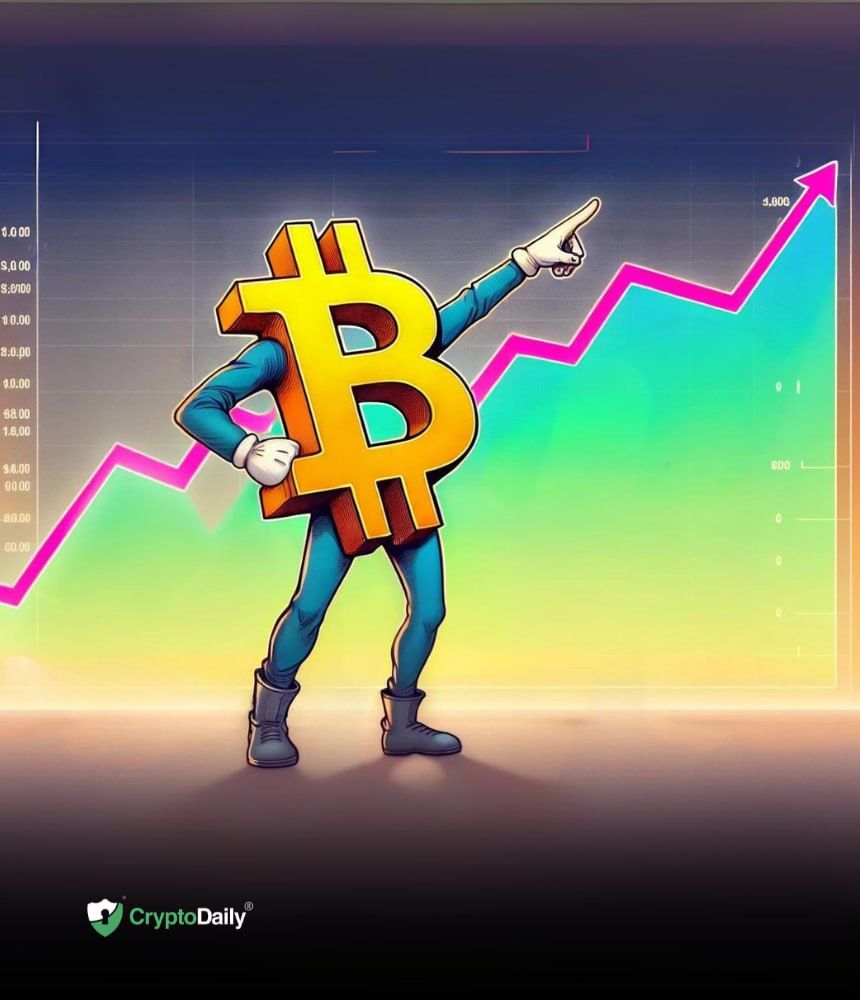


 By Bitmo -A Japanese Kaspa Ambassador
By Bitmo -A Japanese Kaspa Ambassador